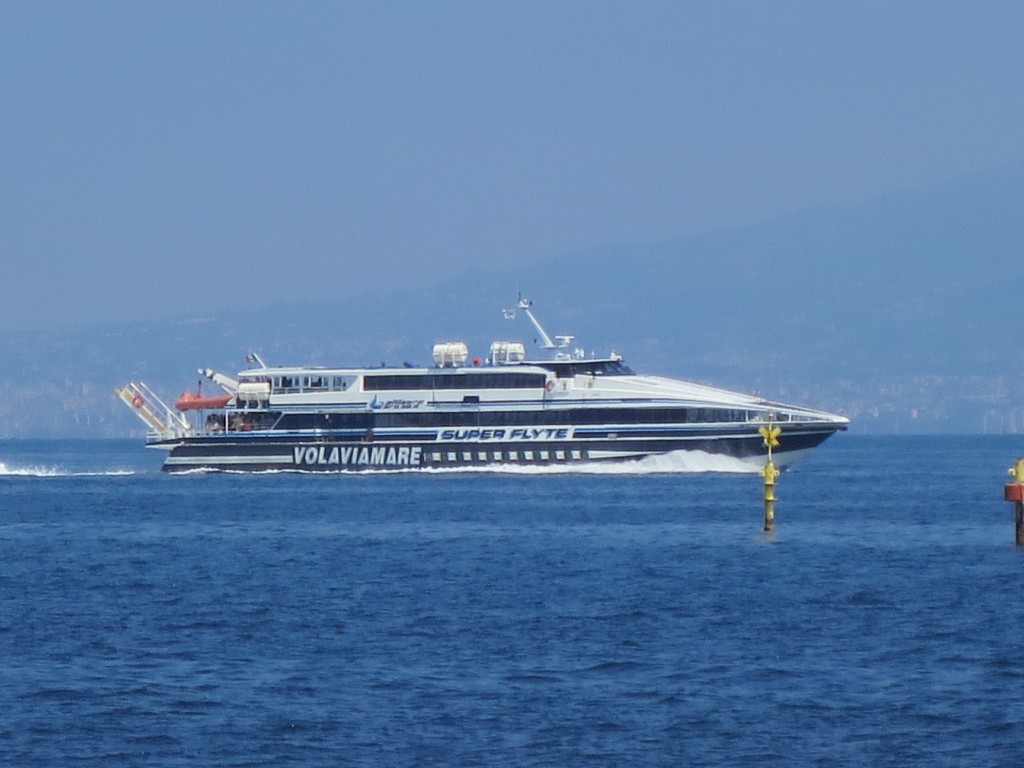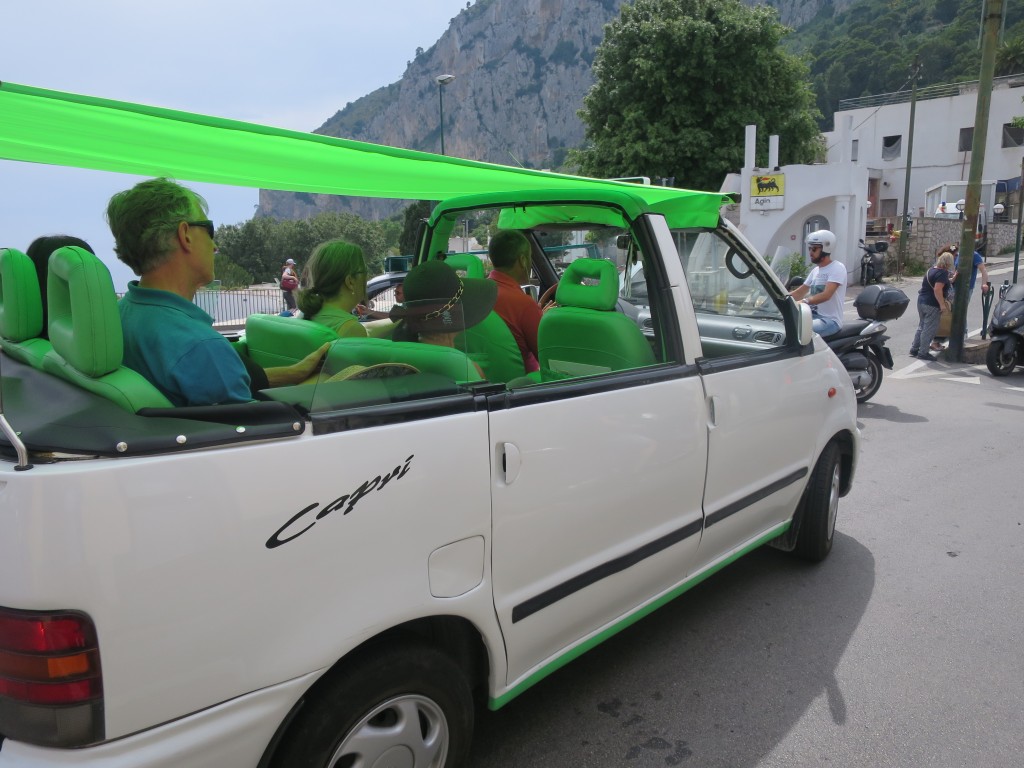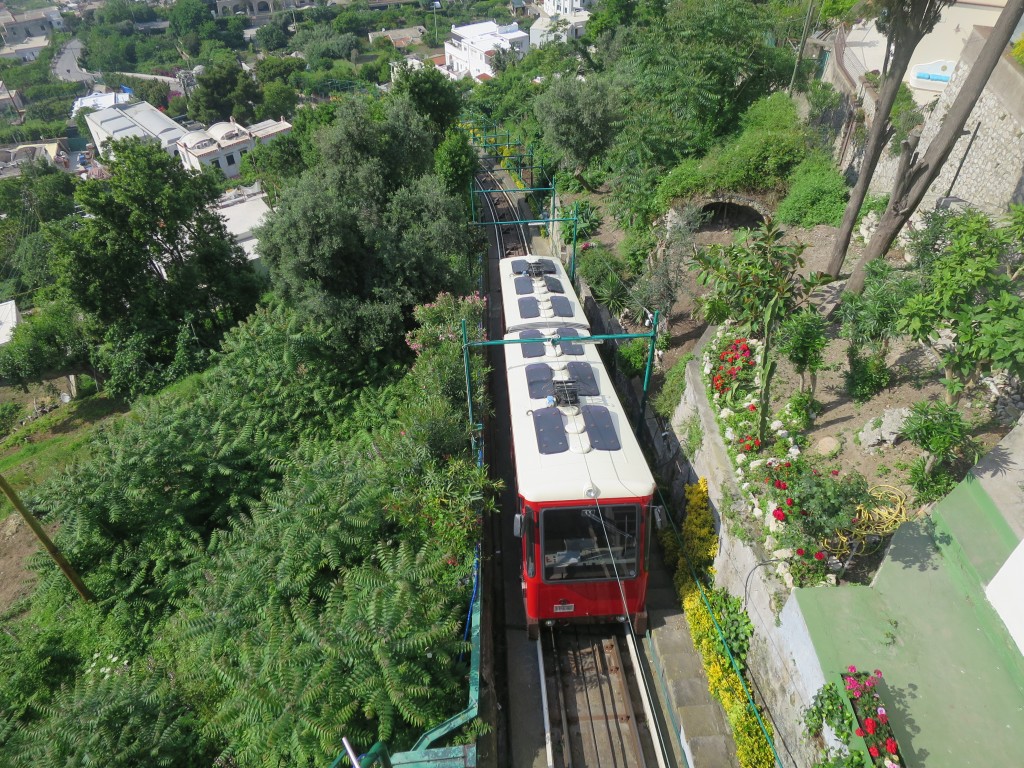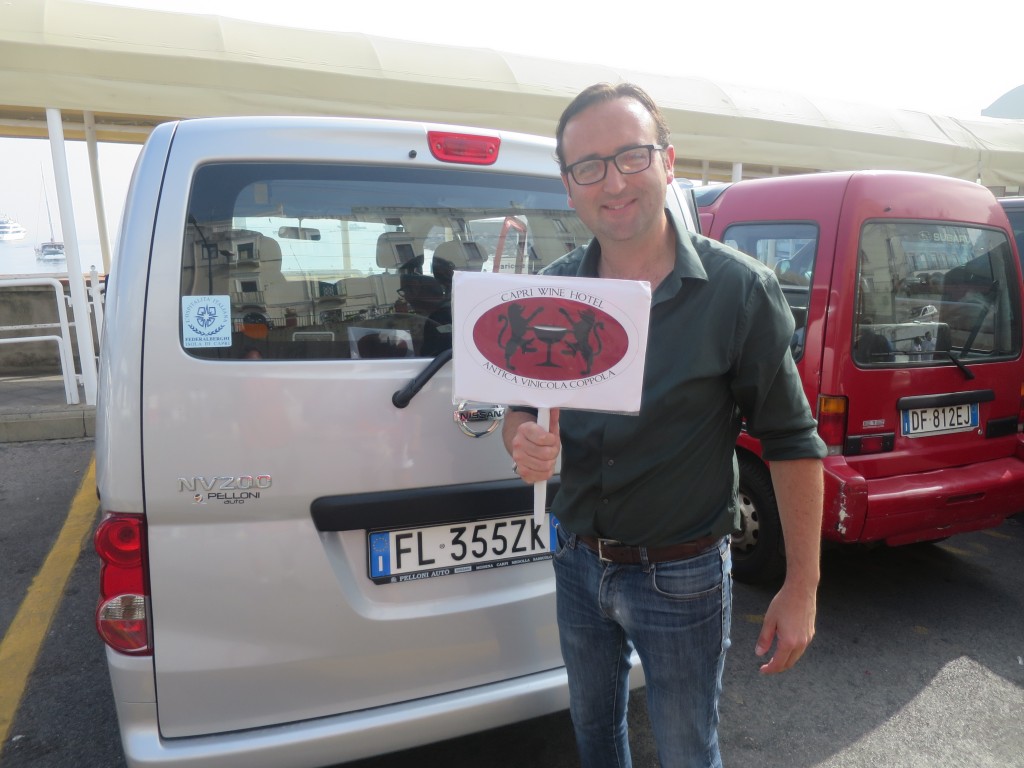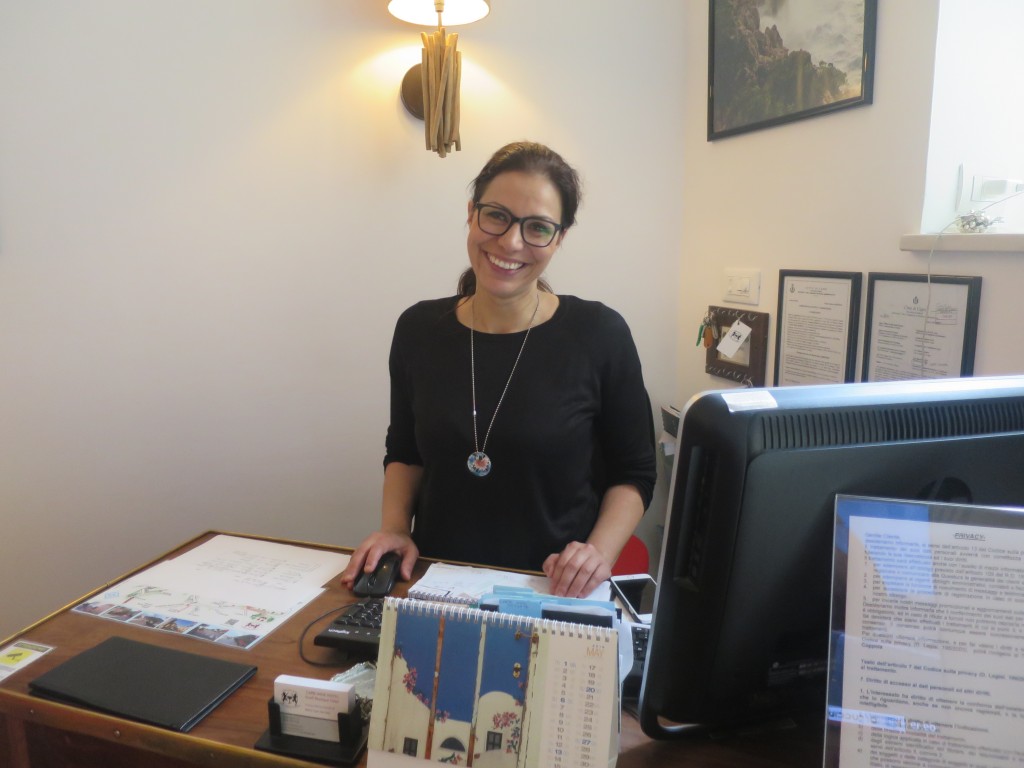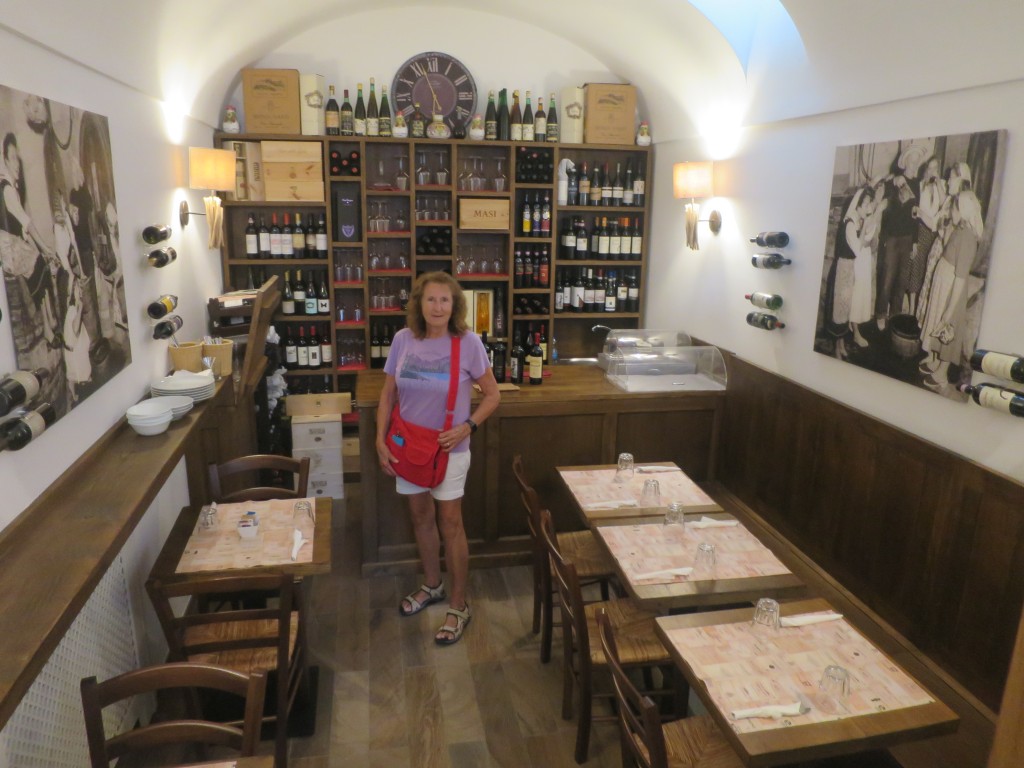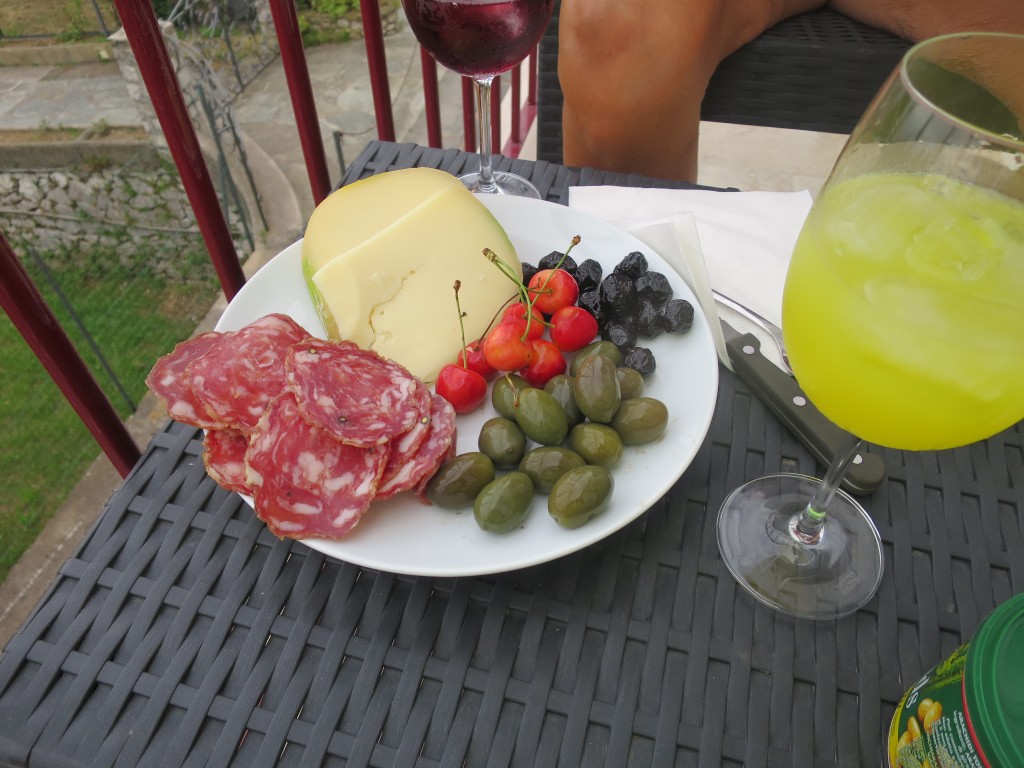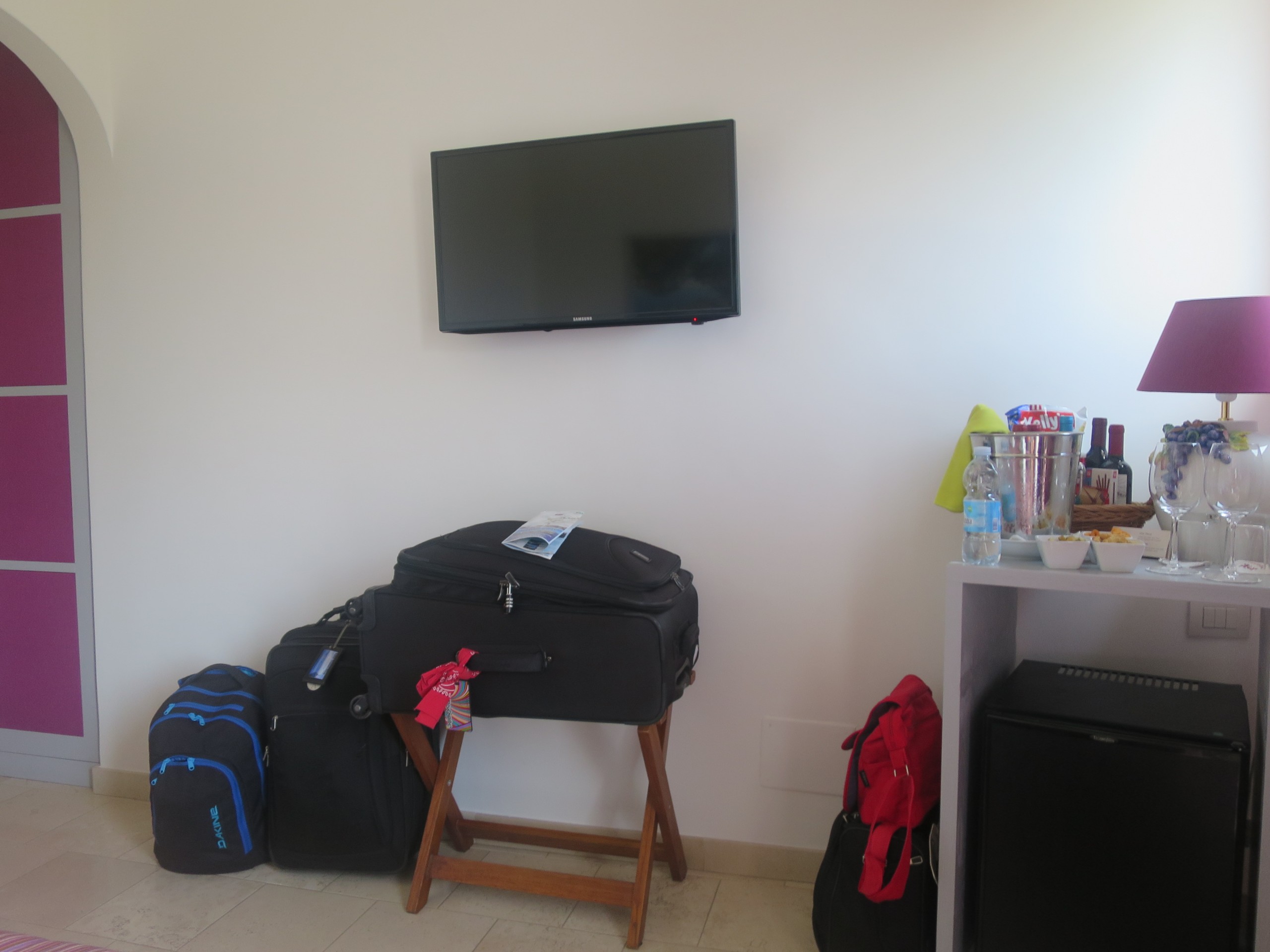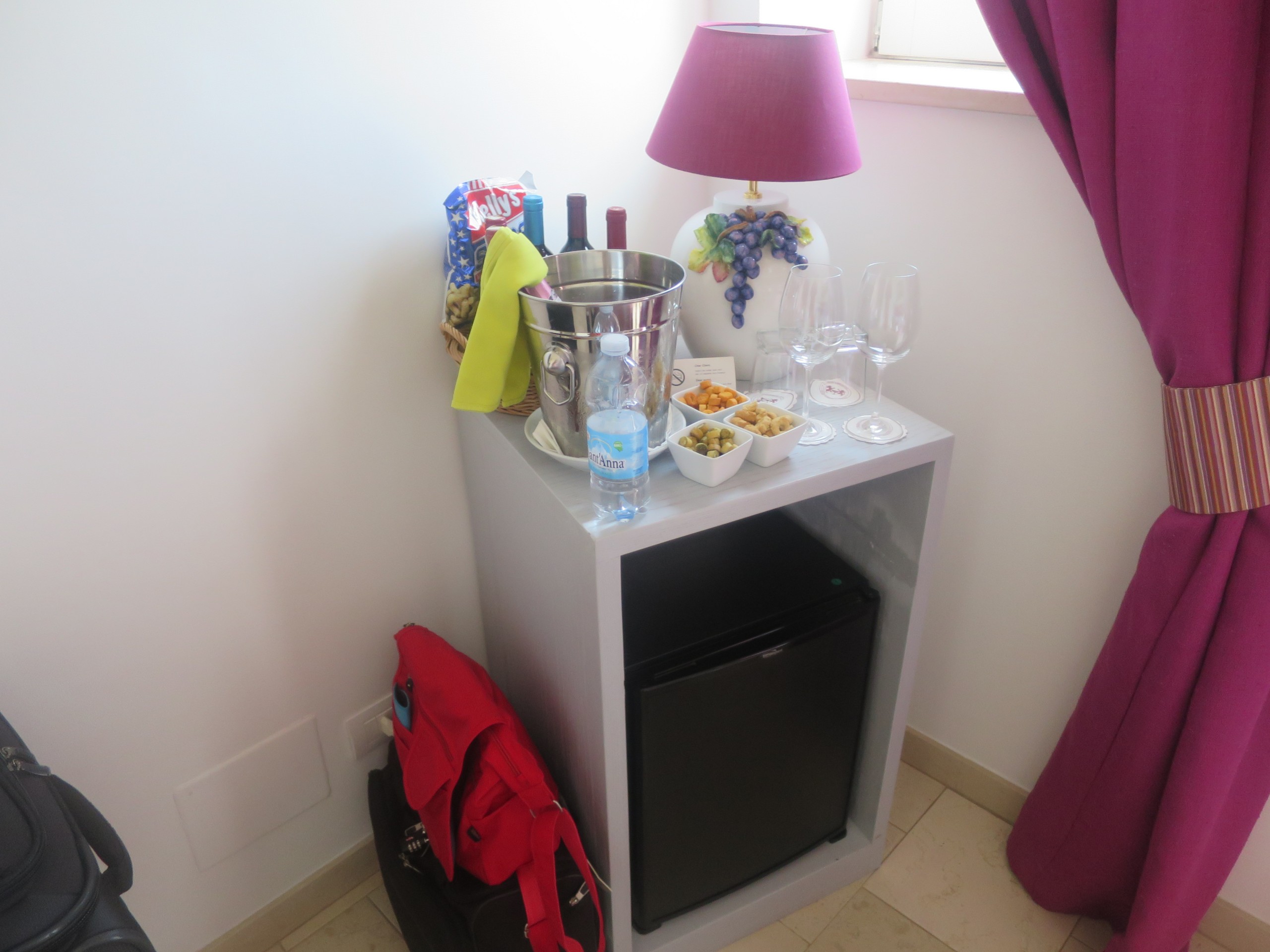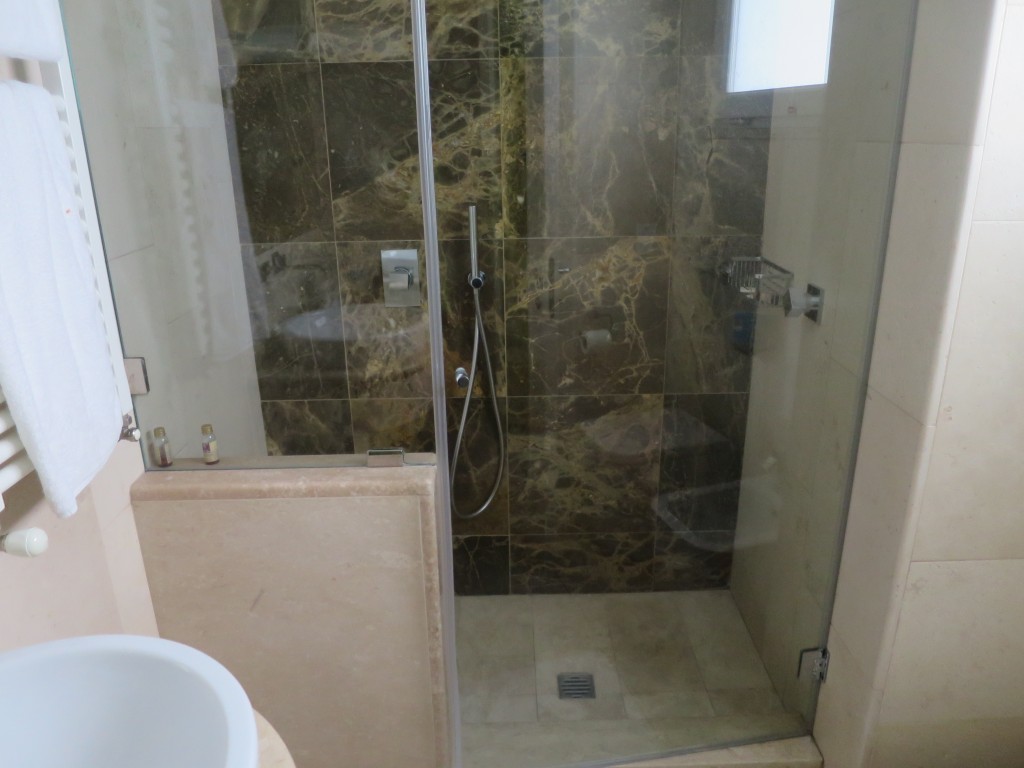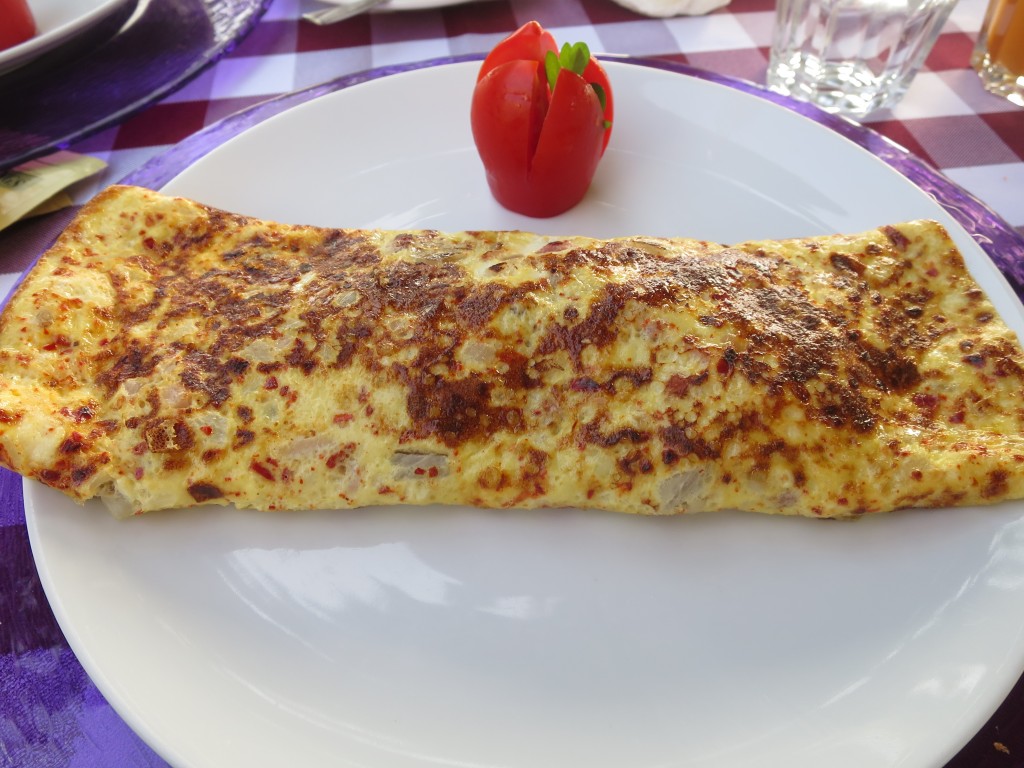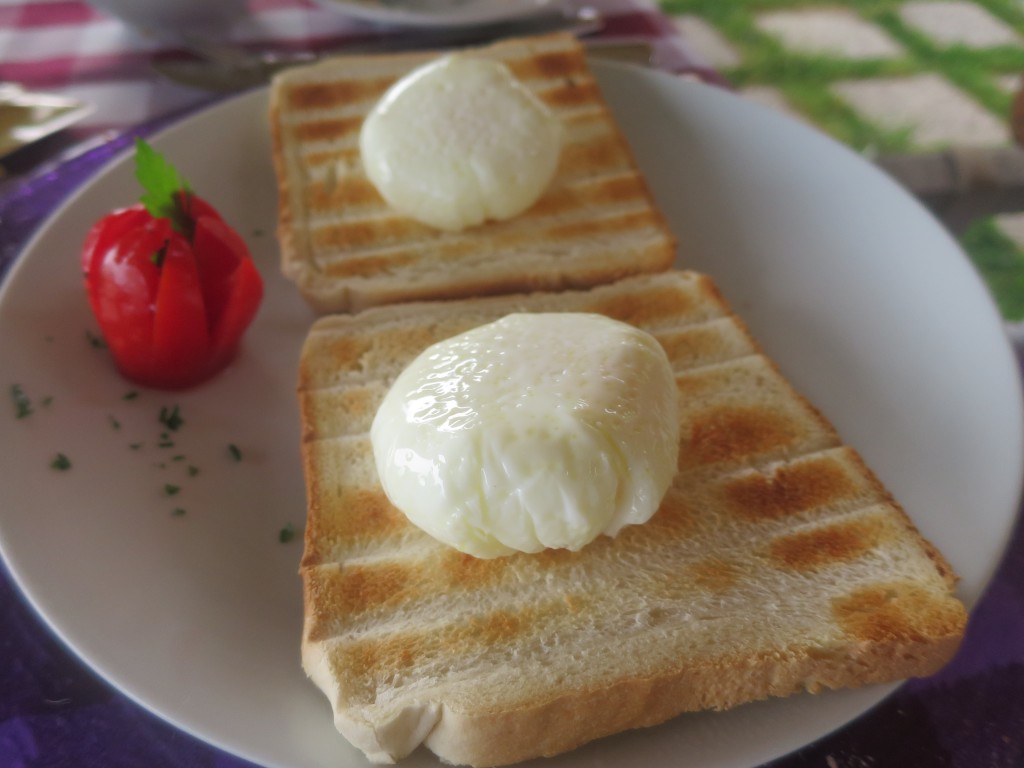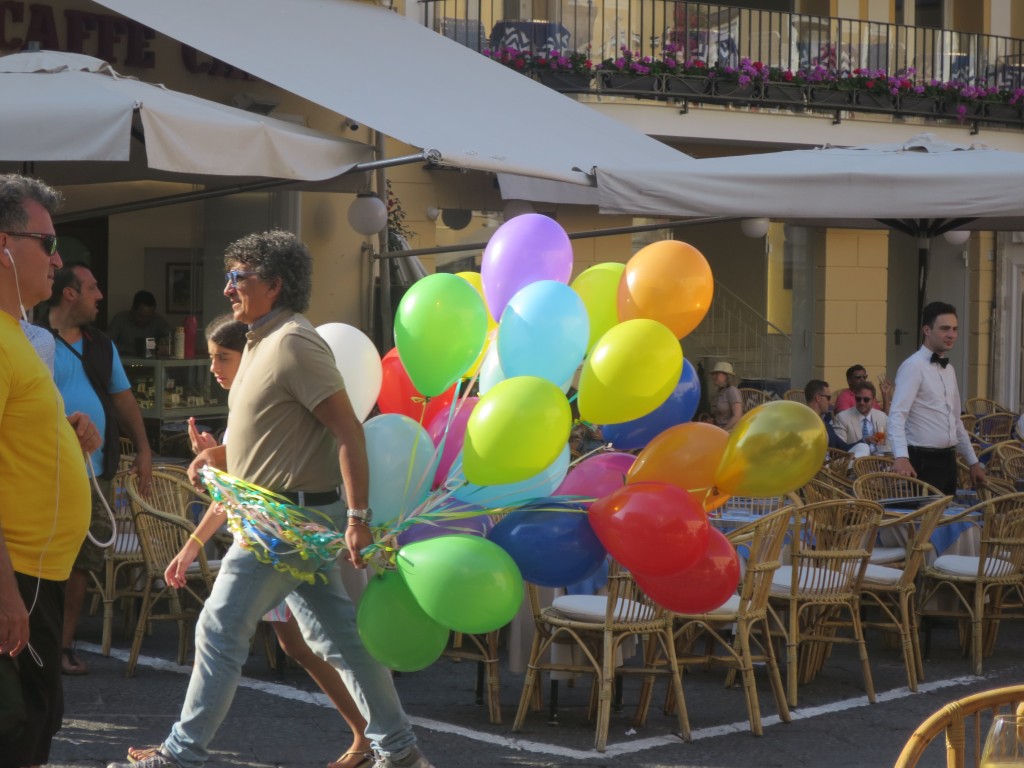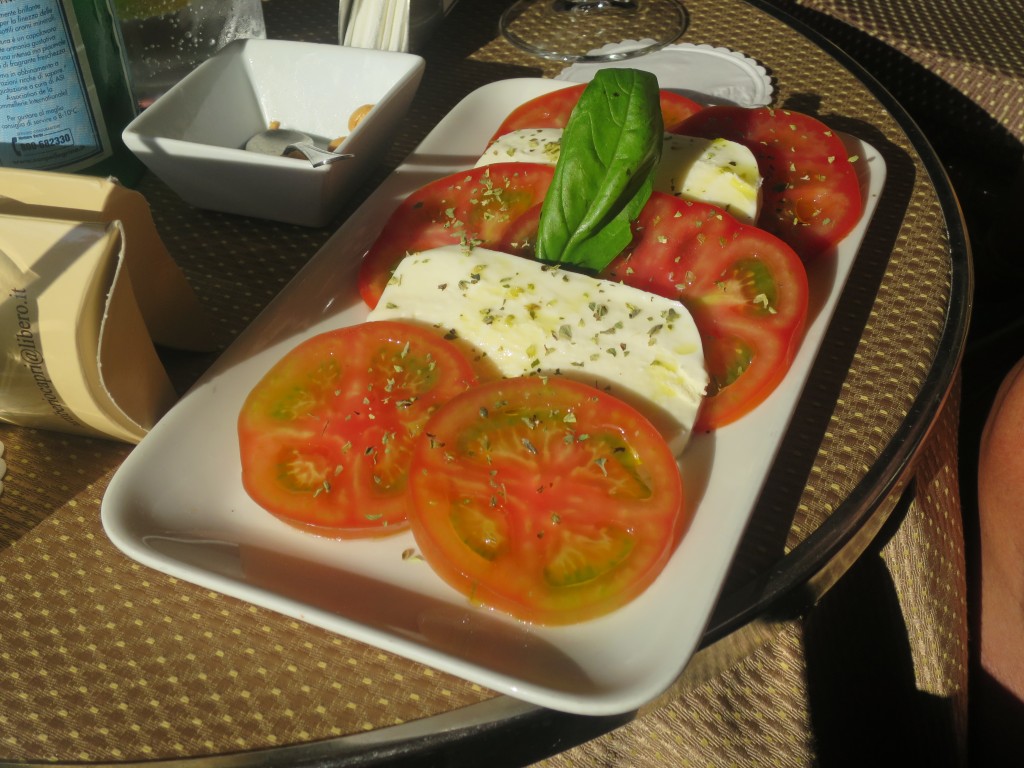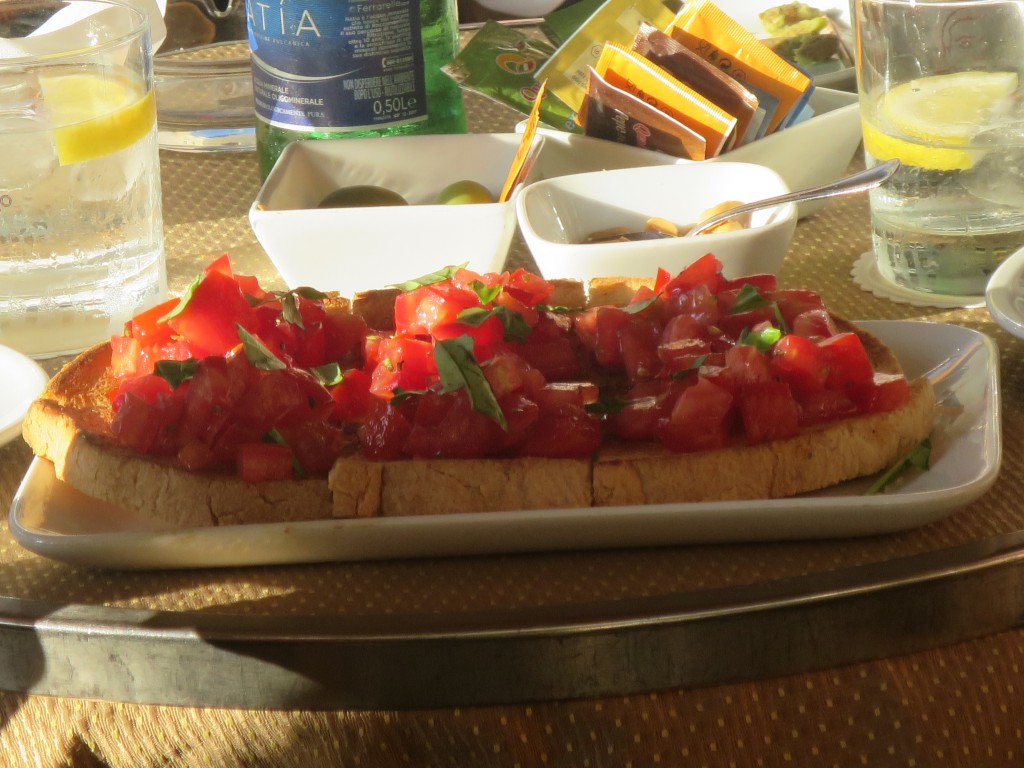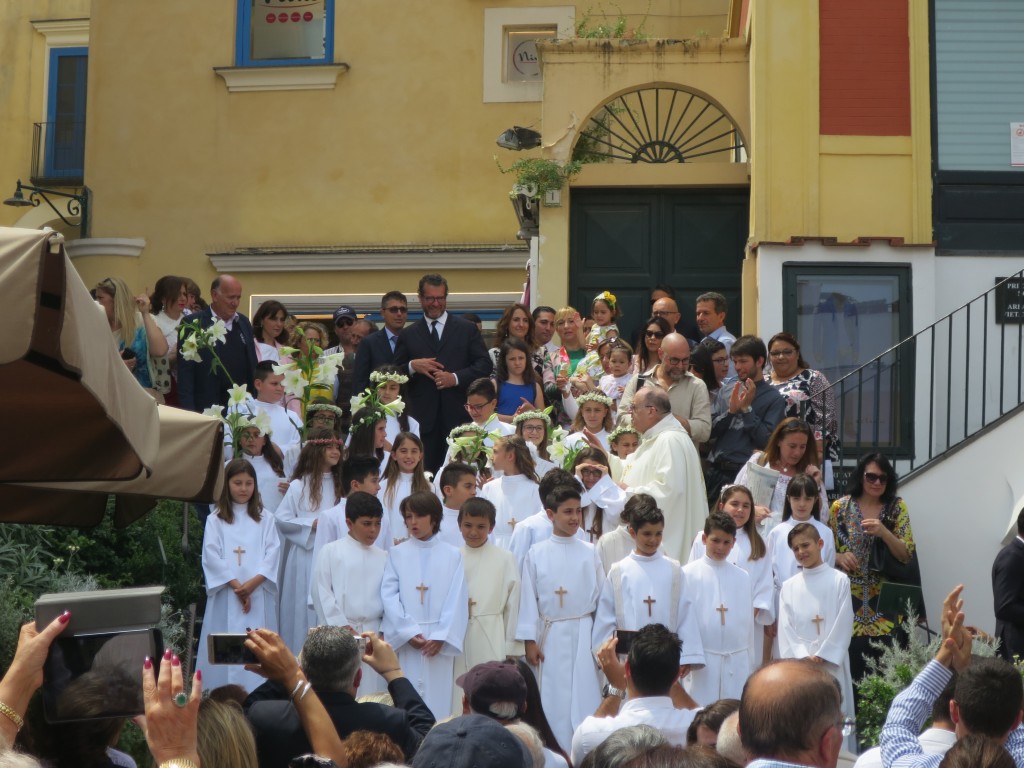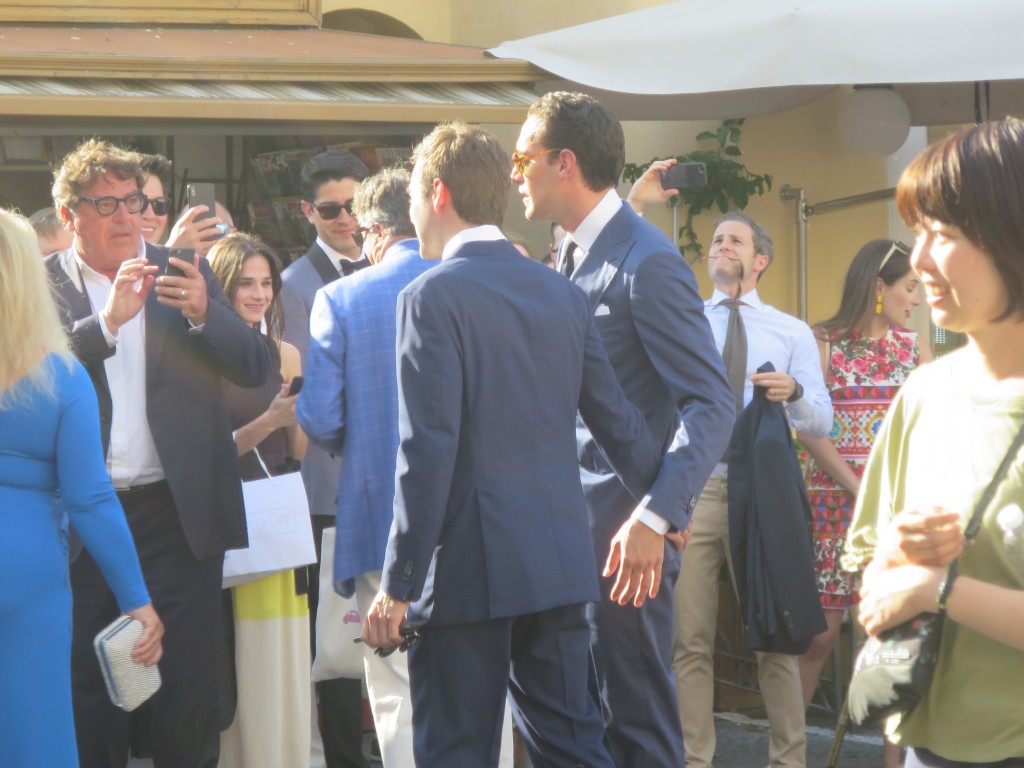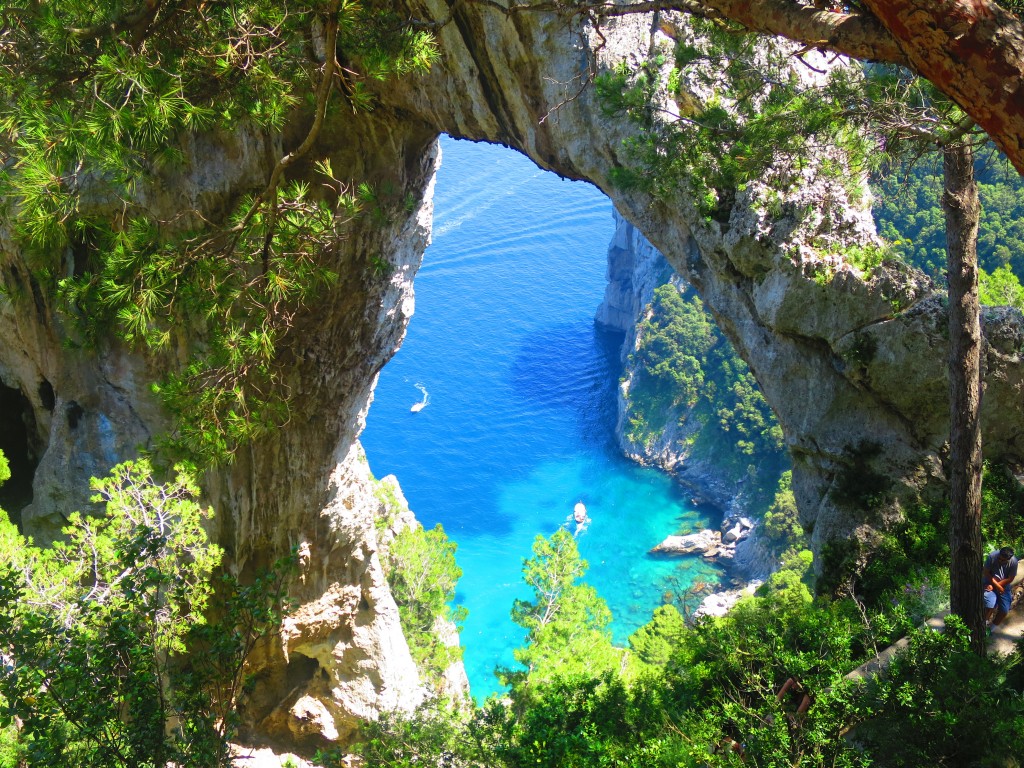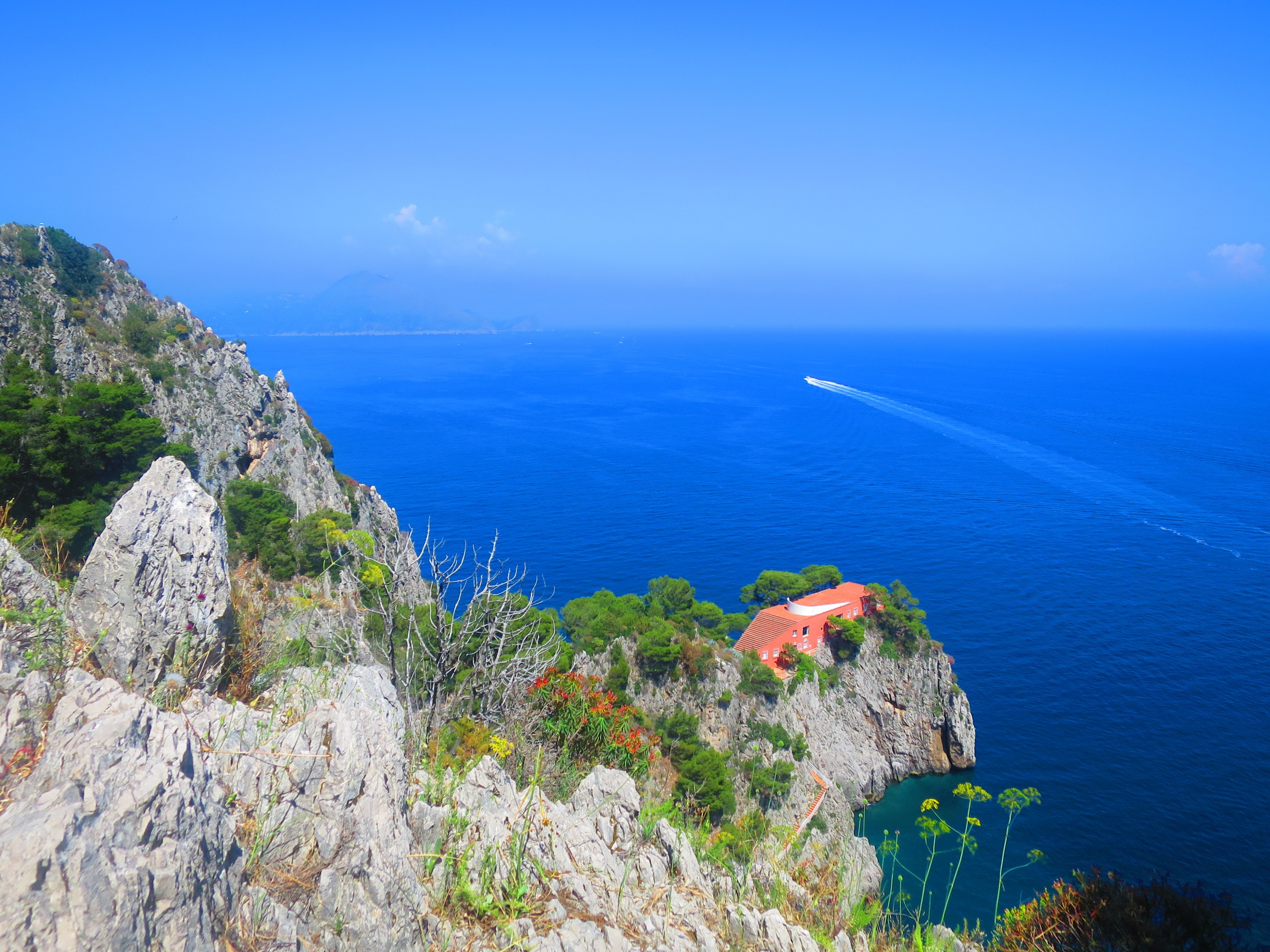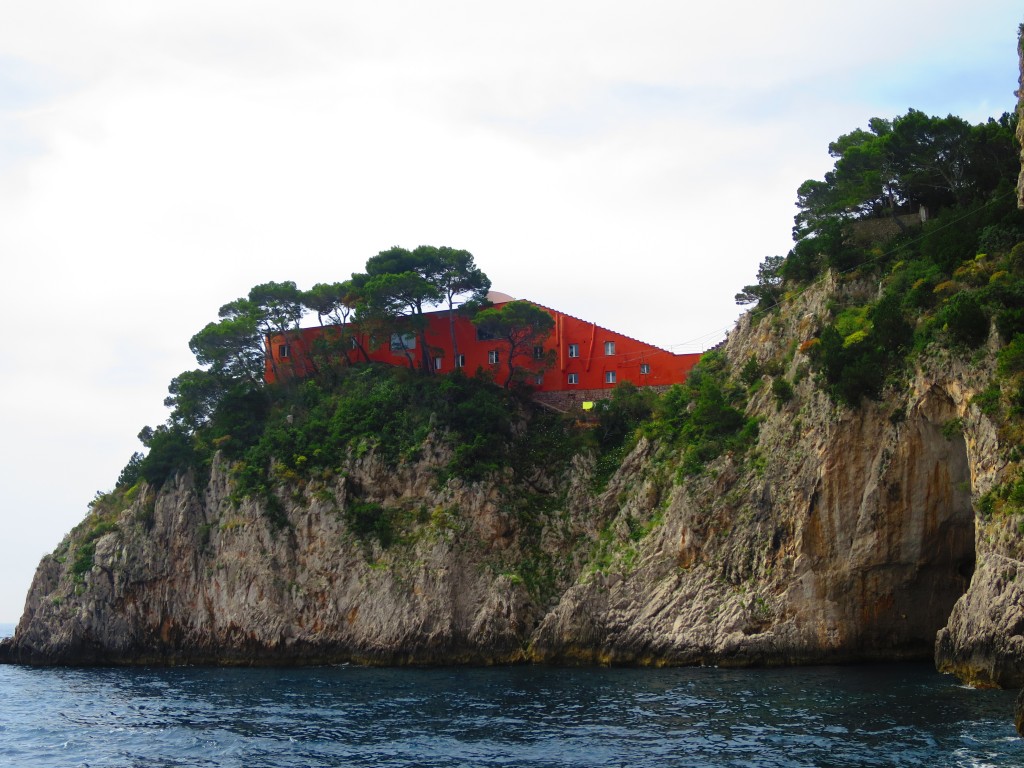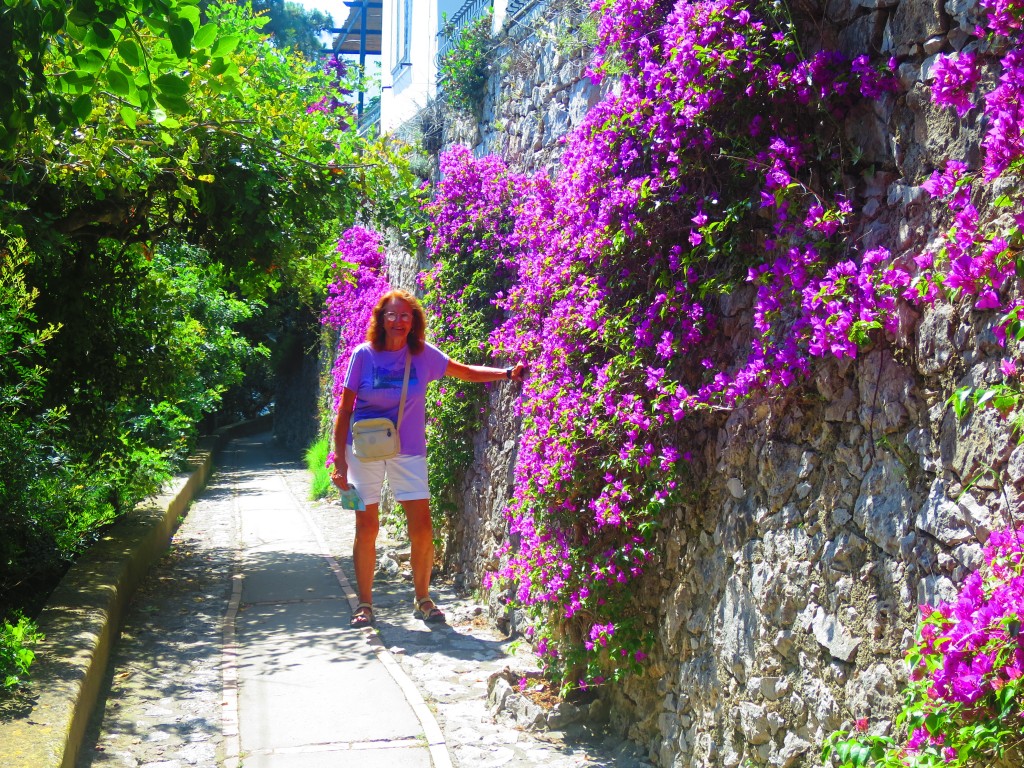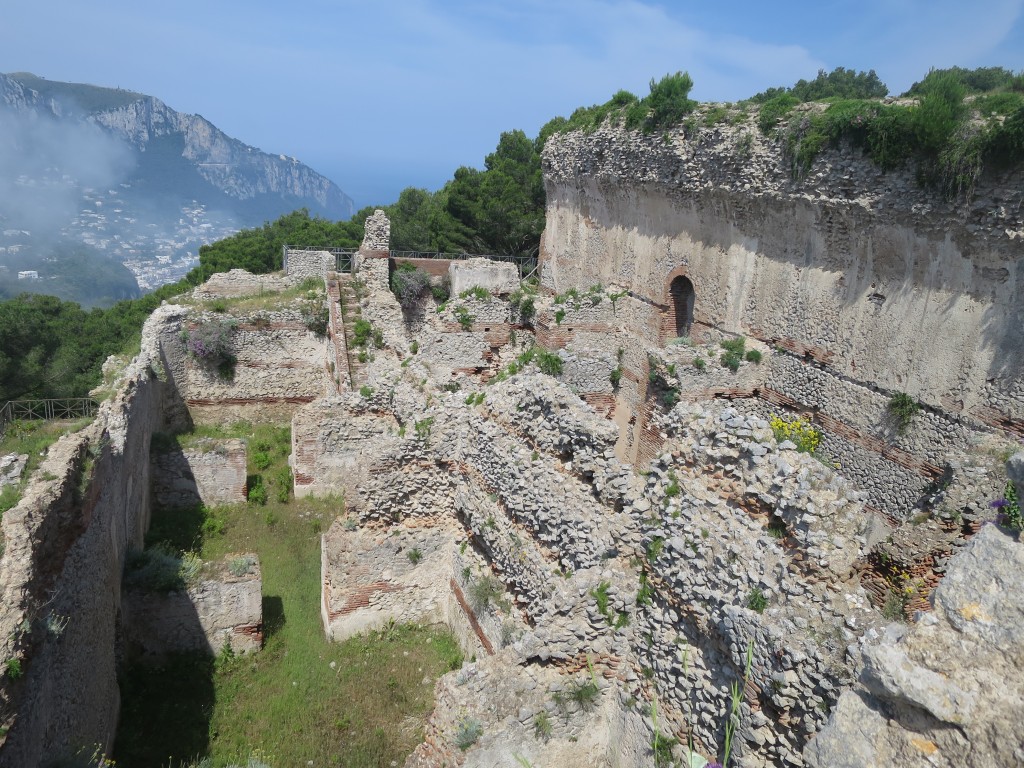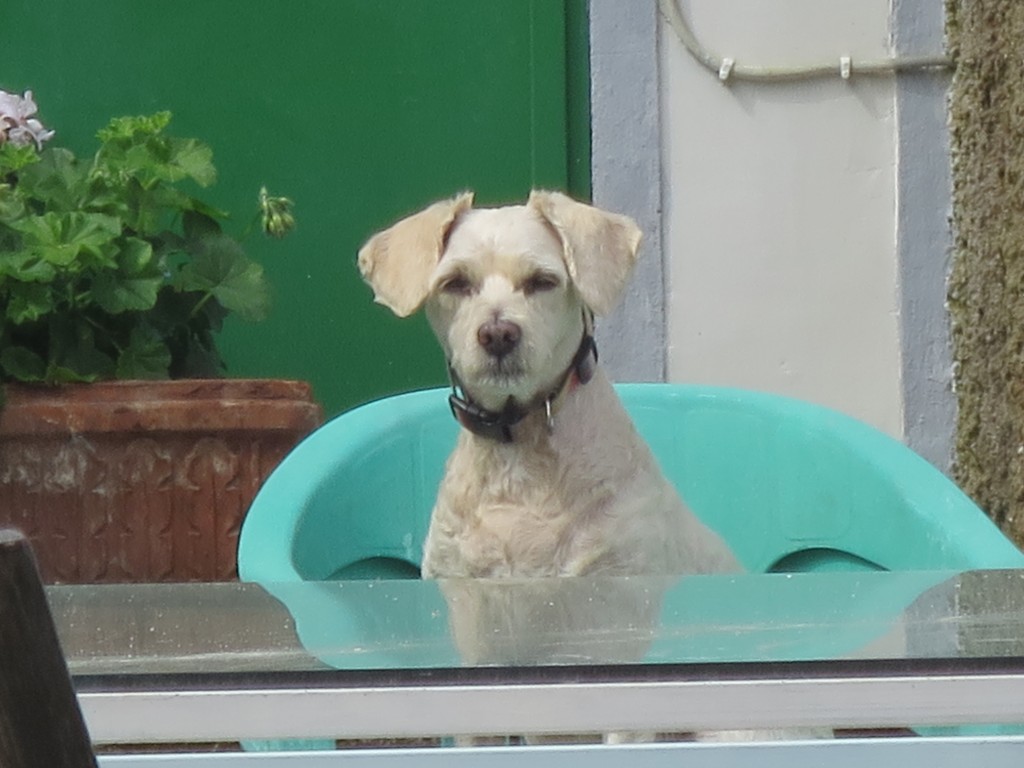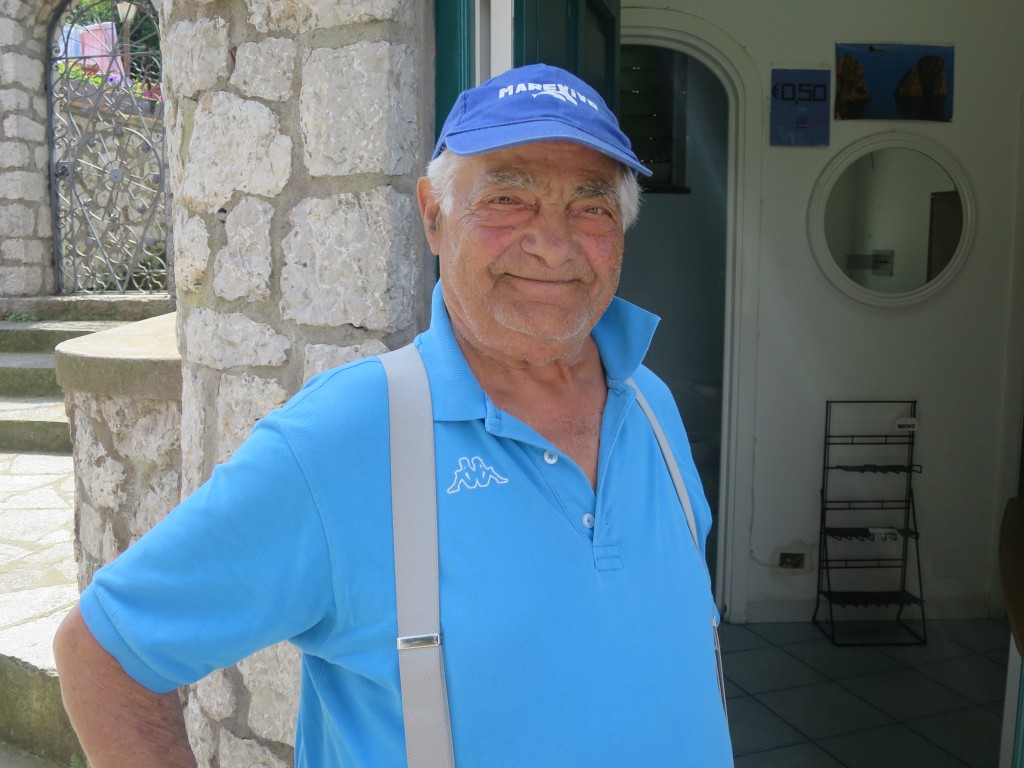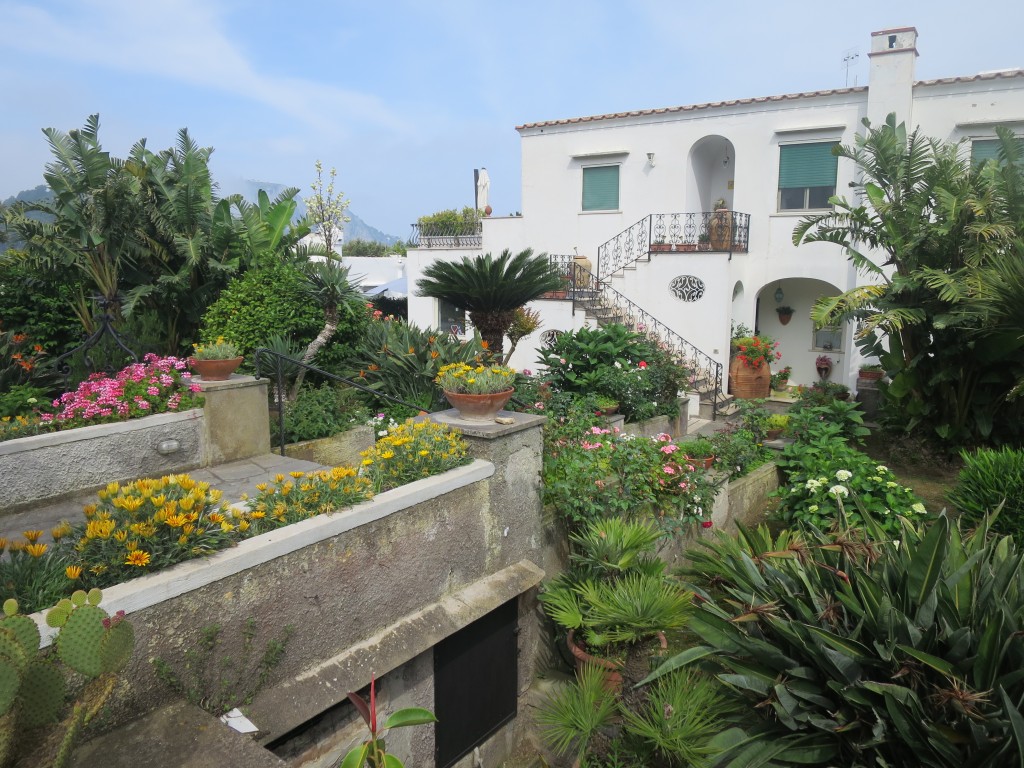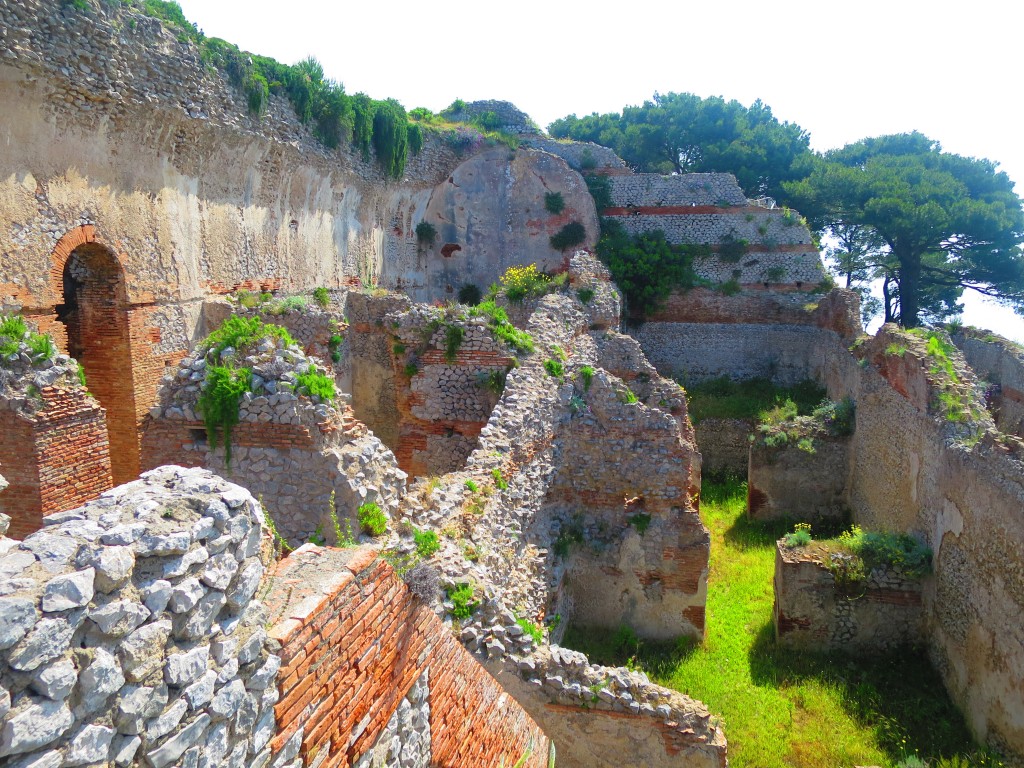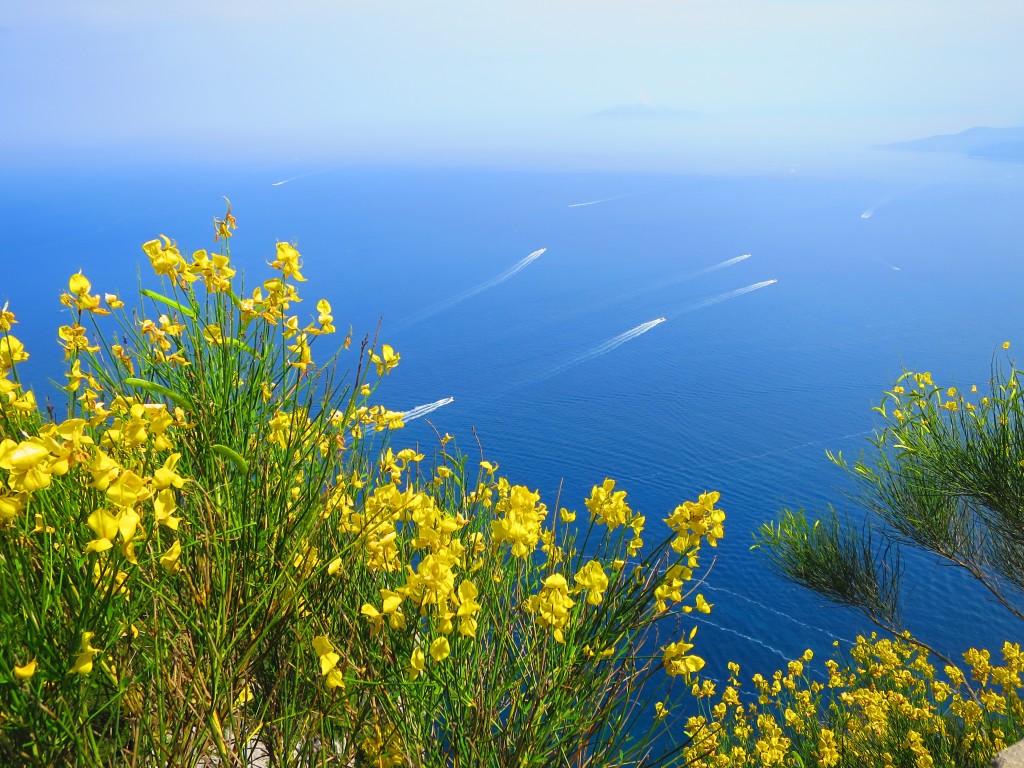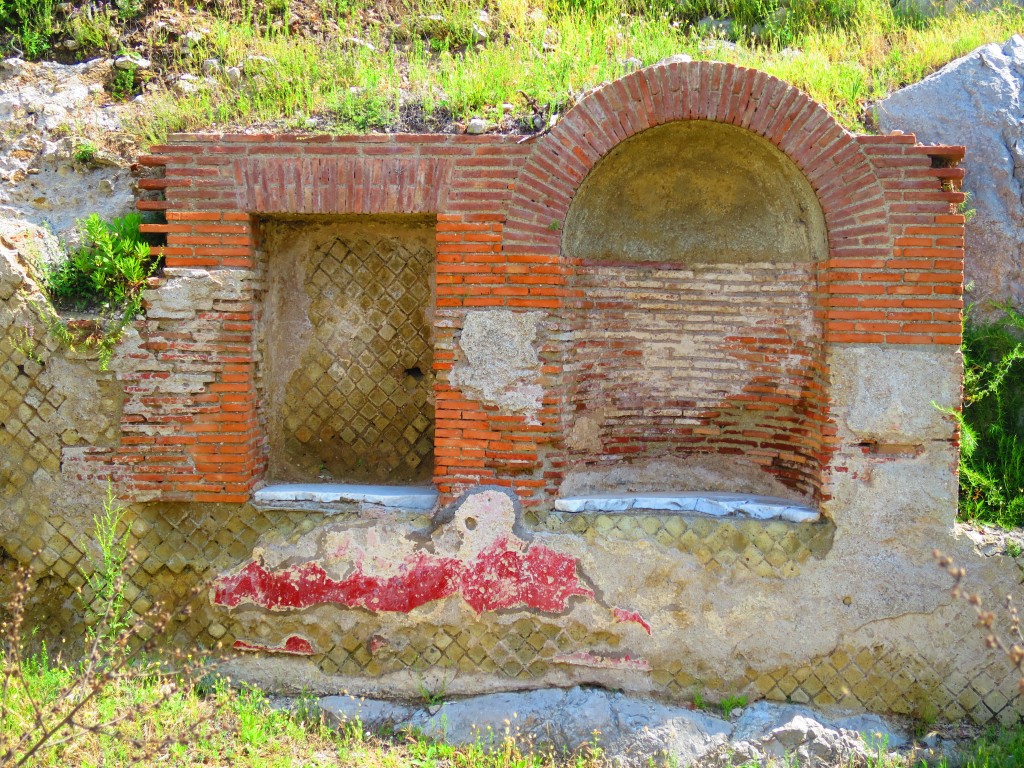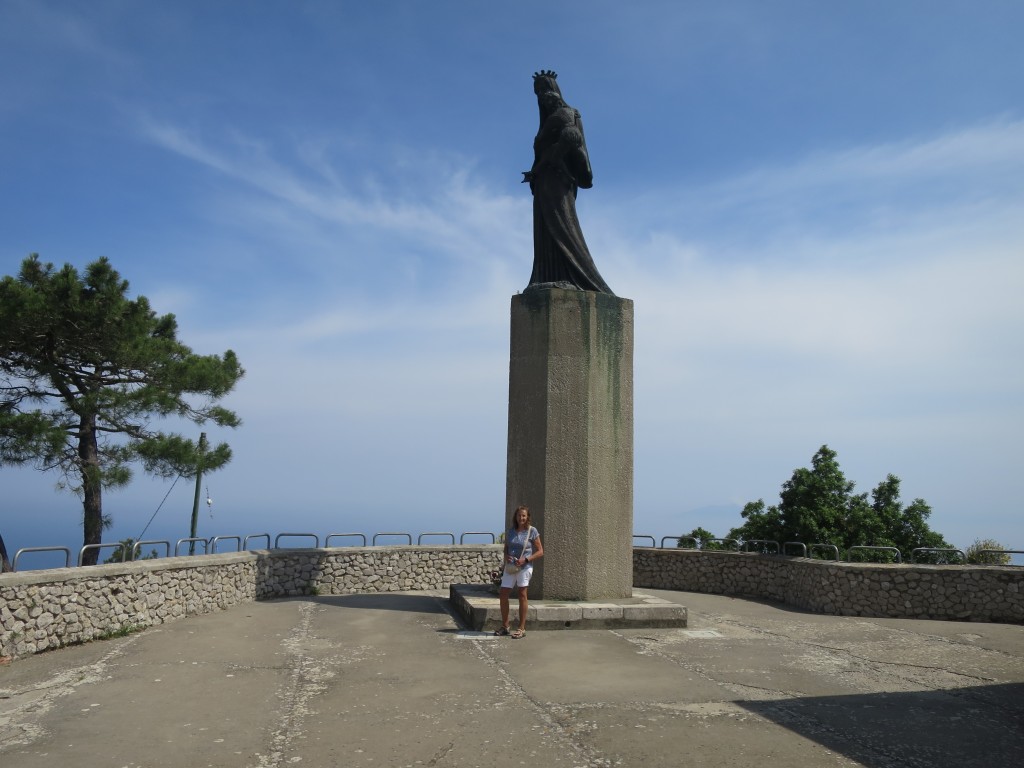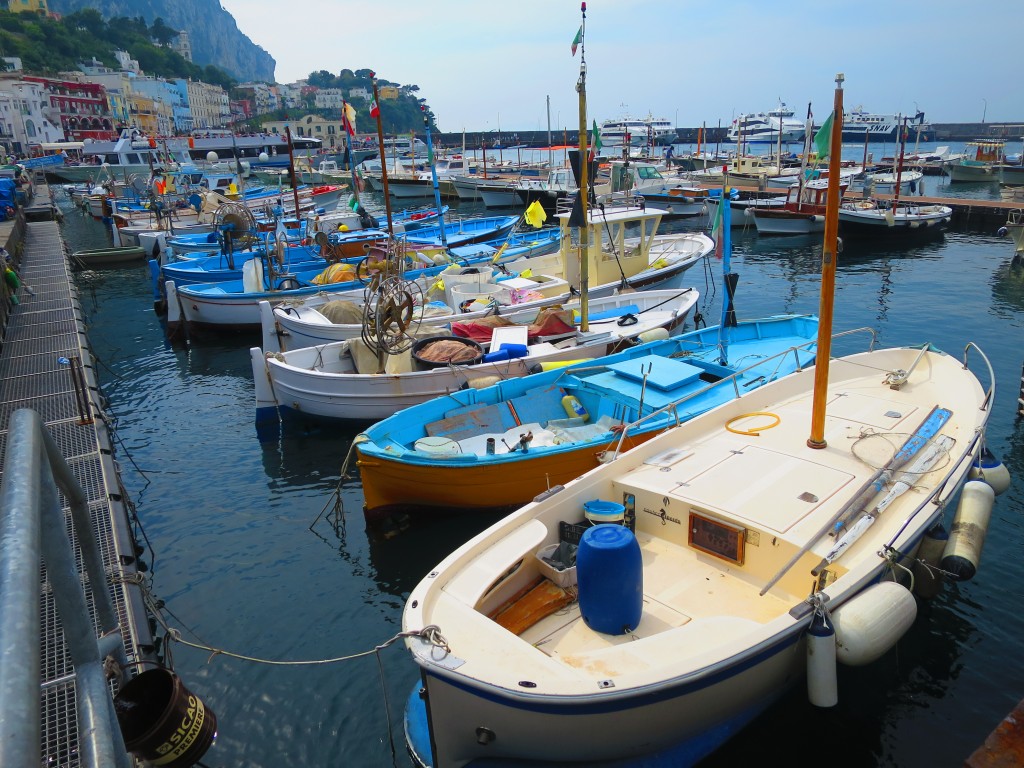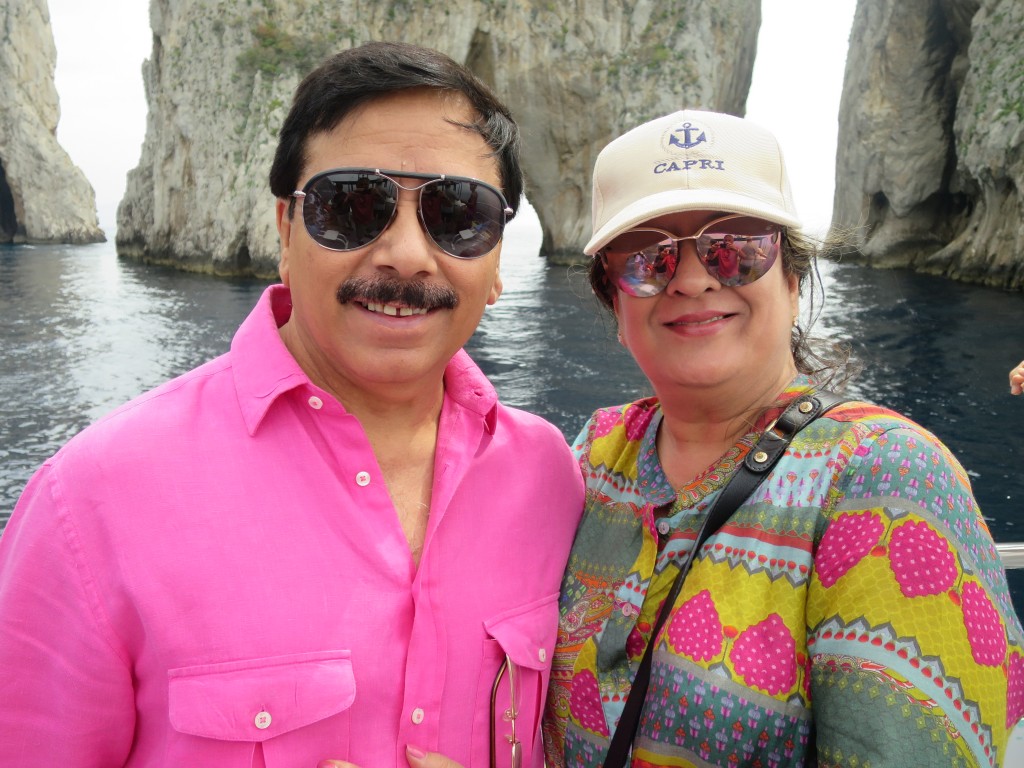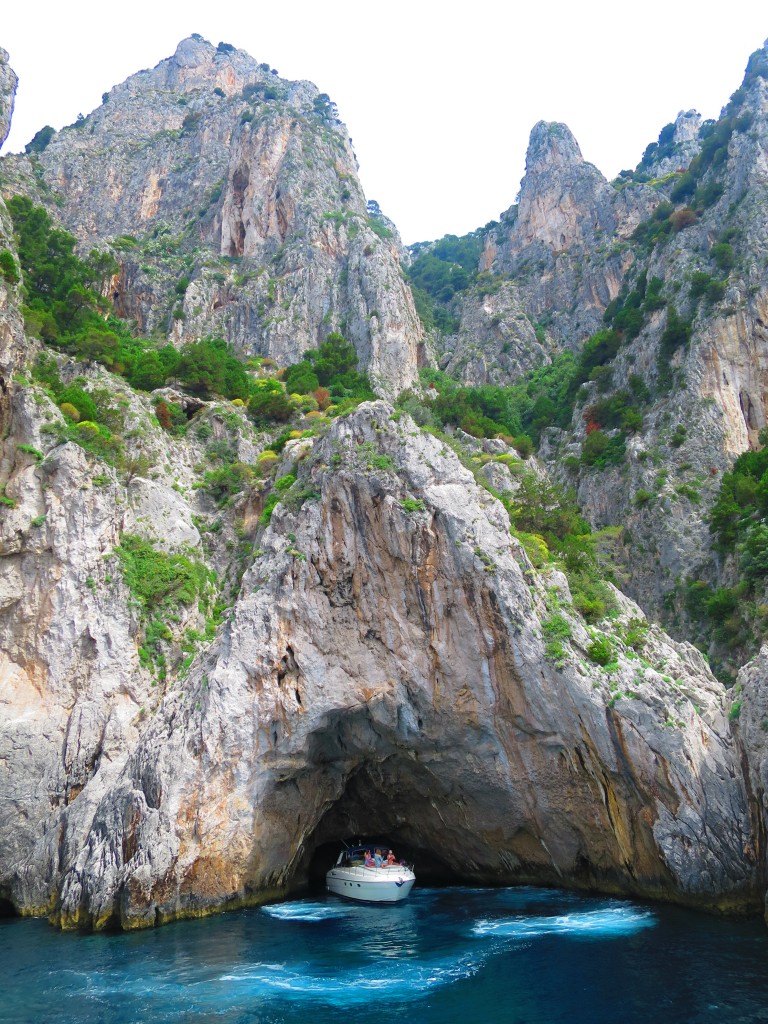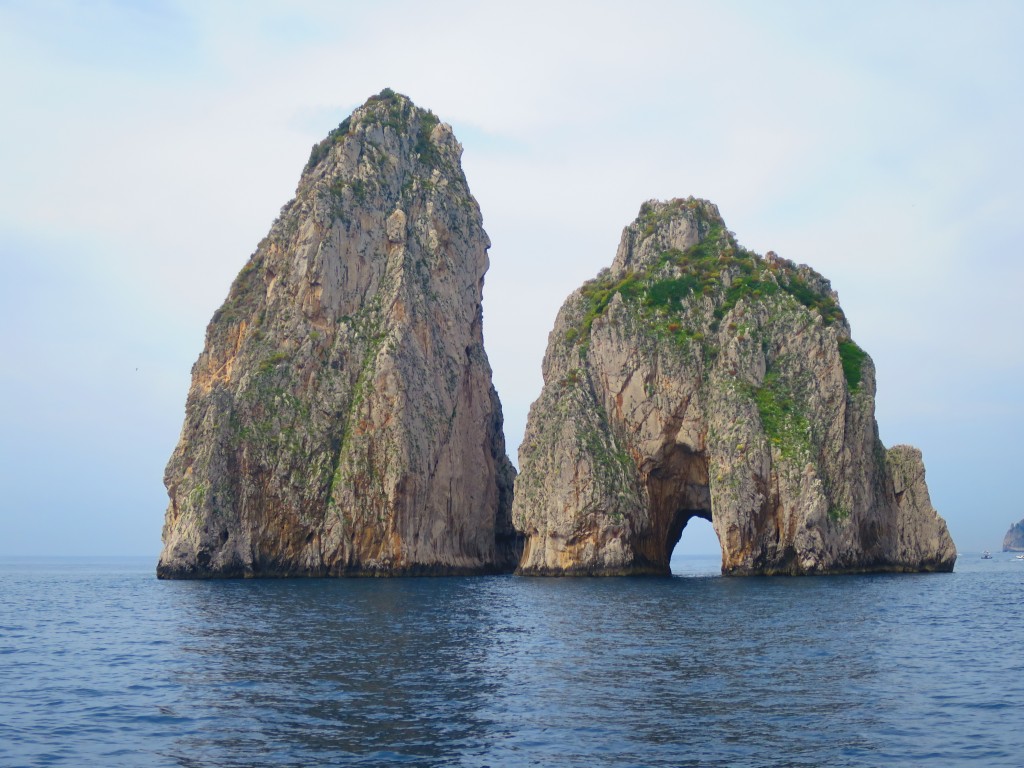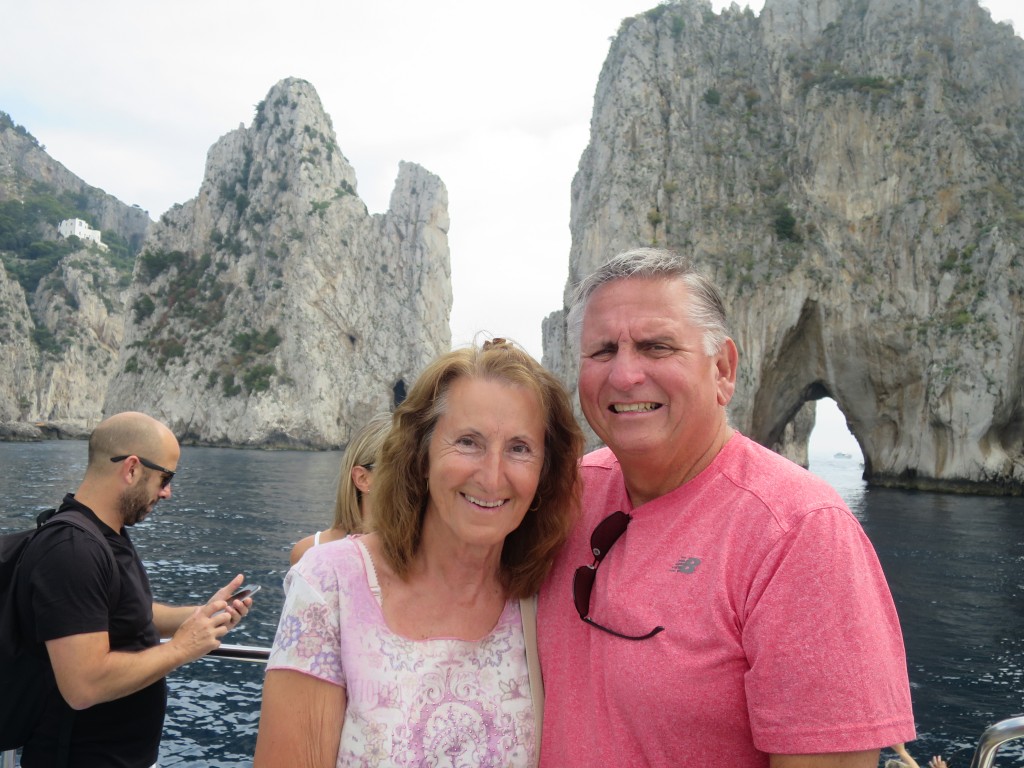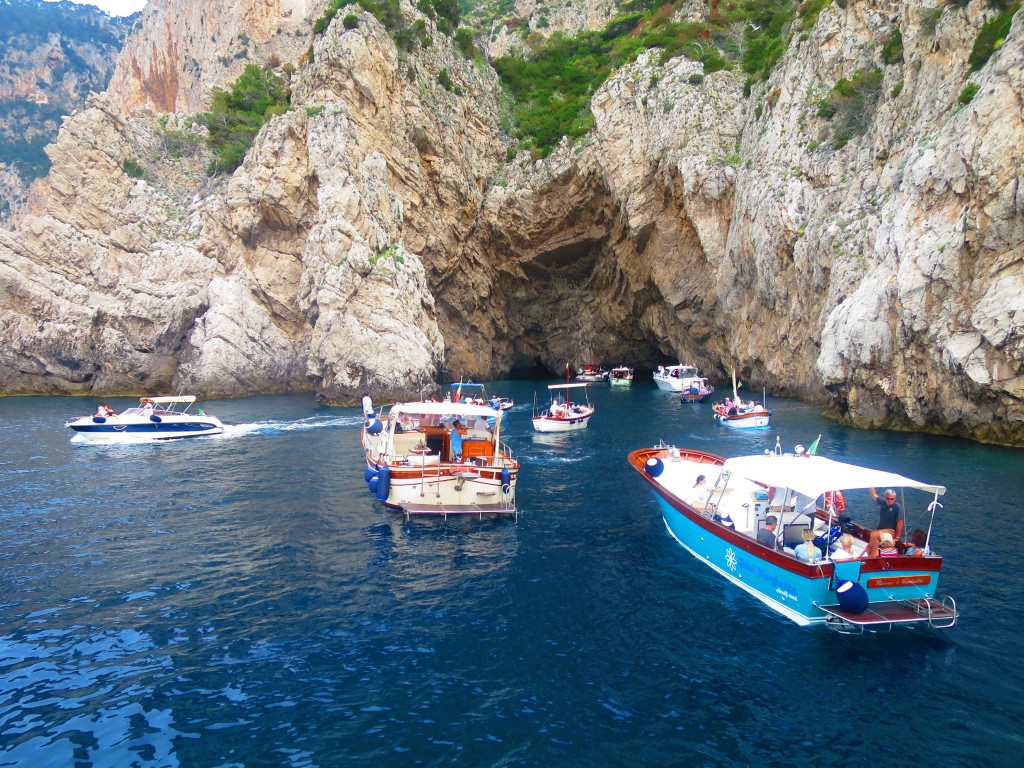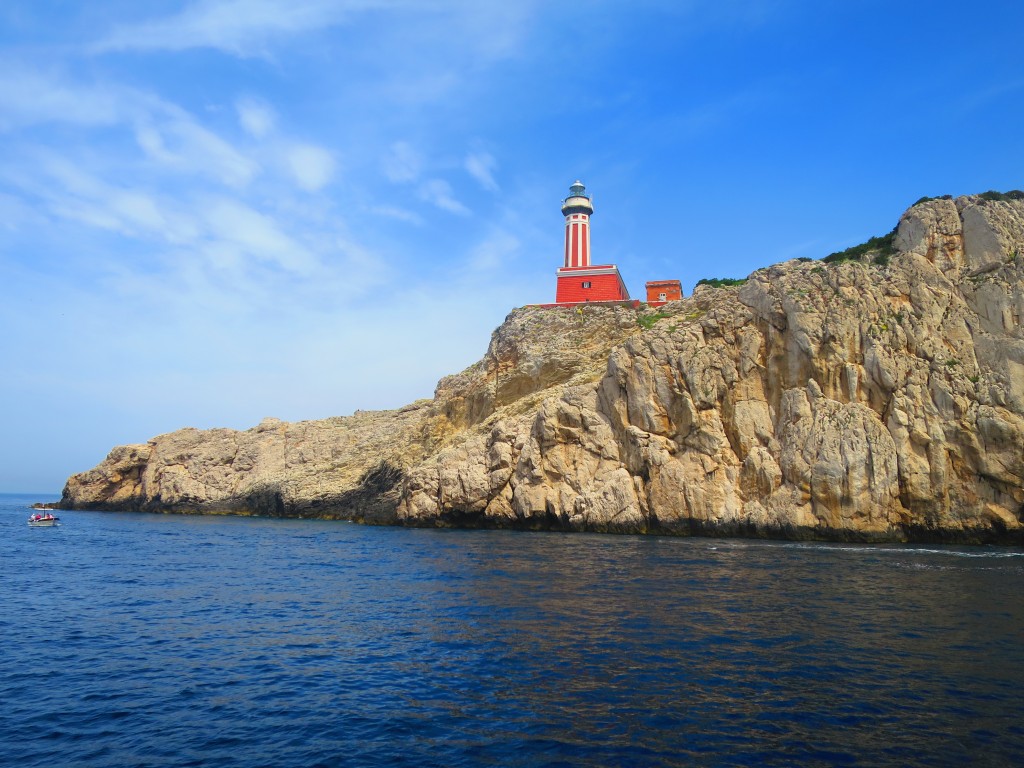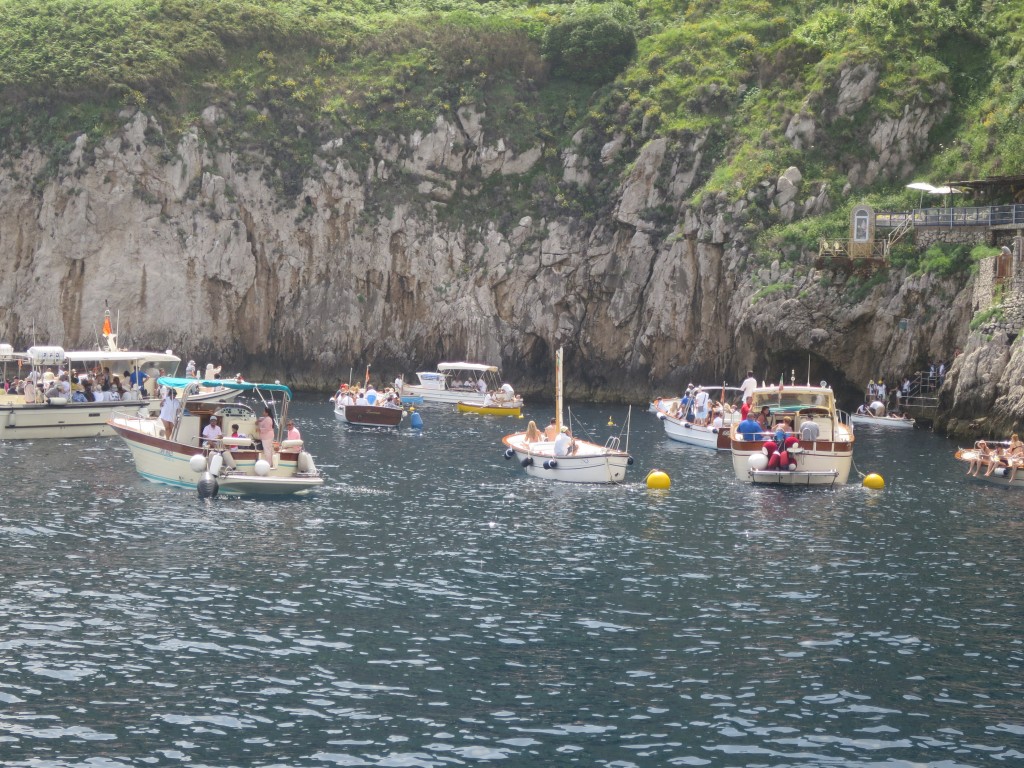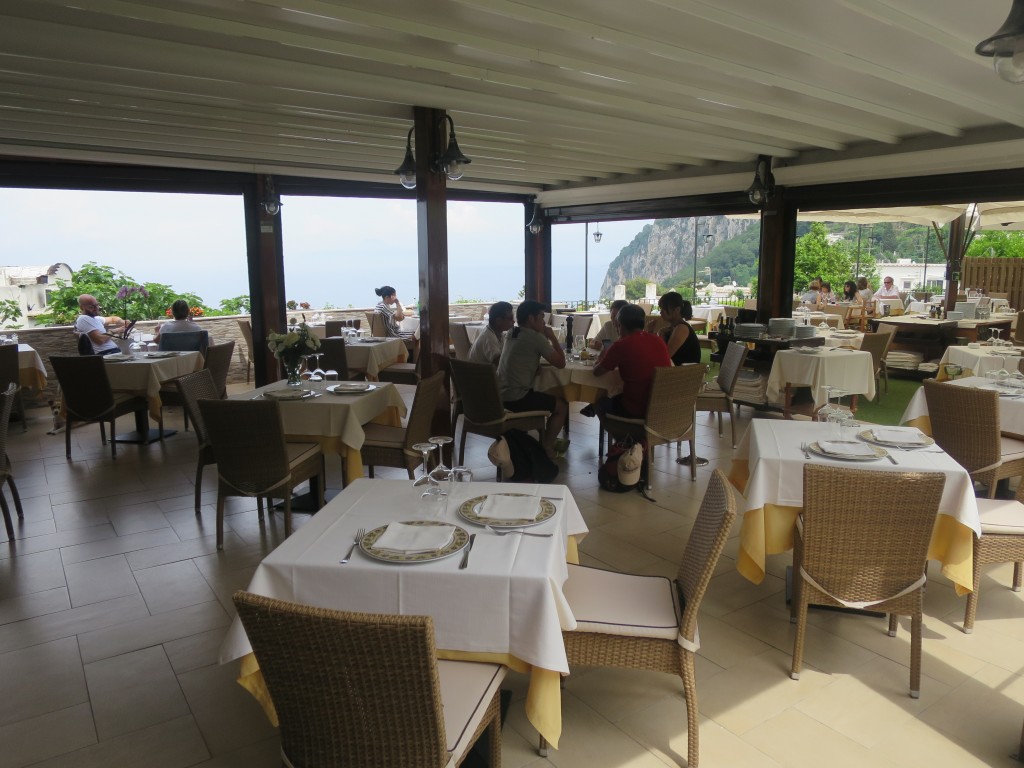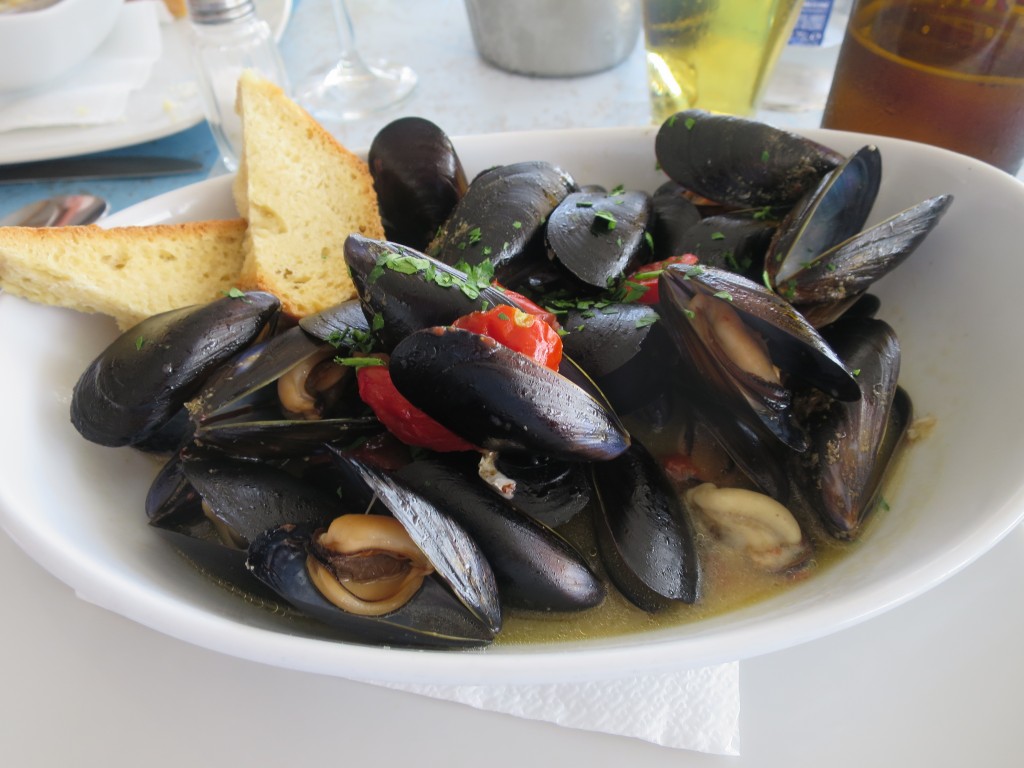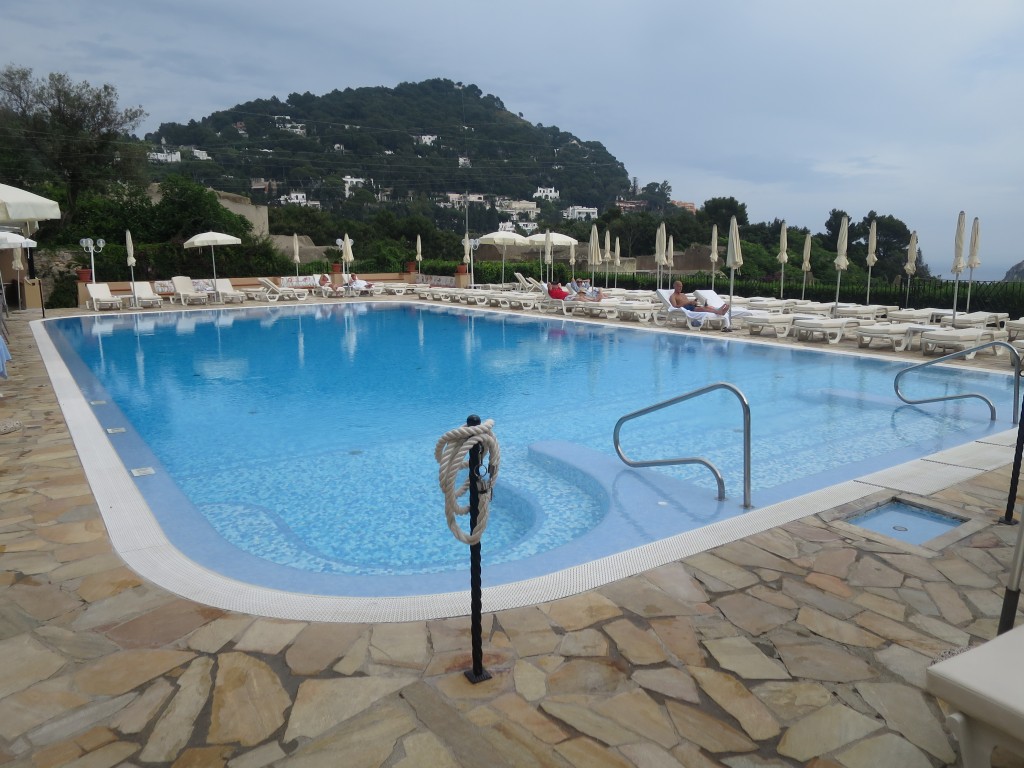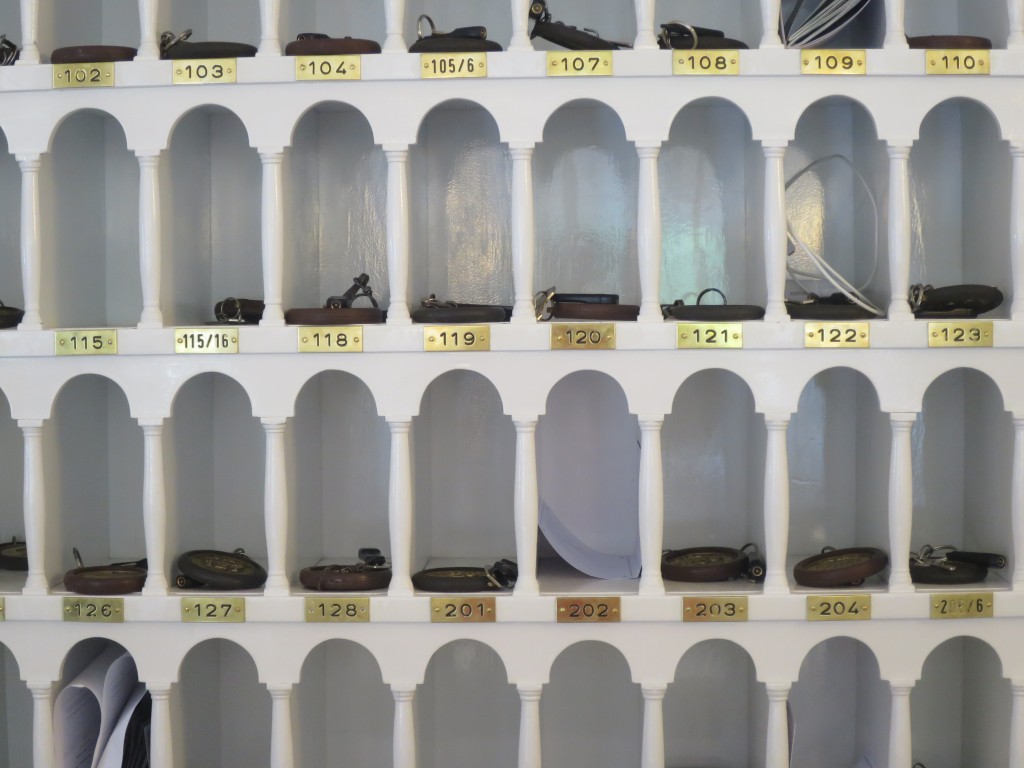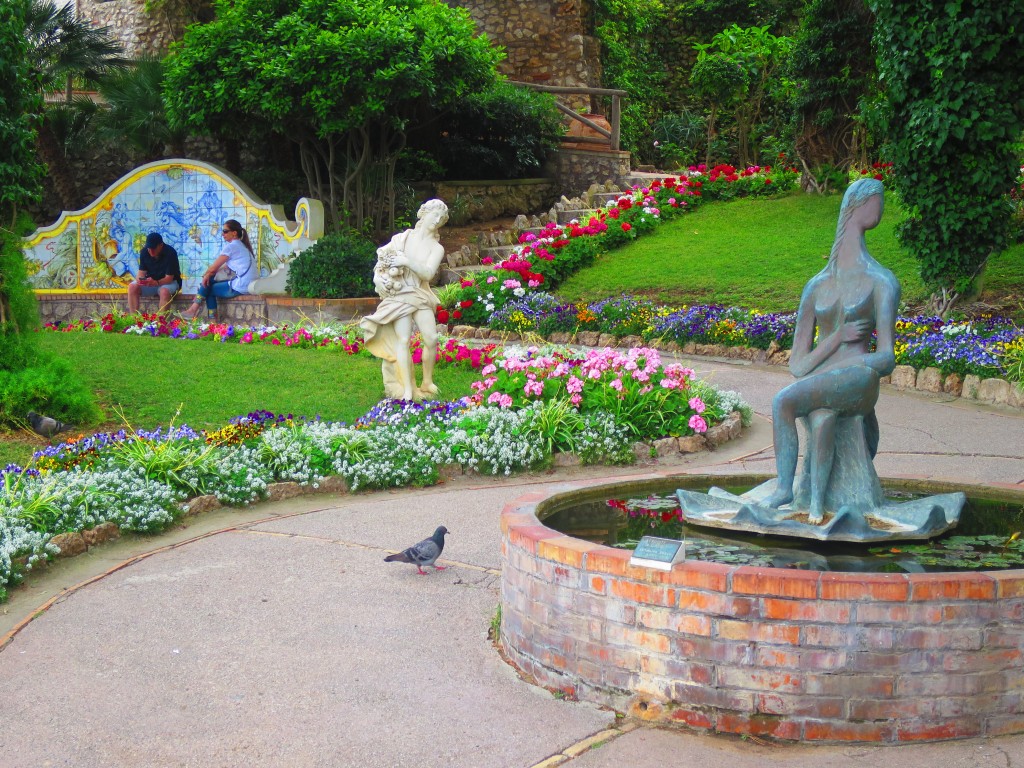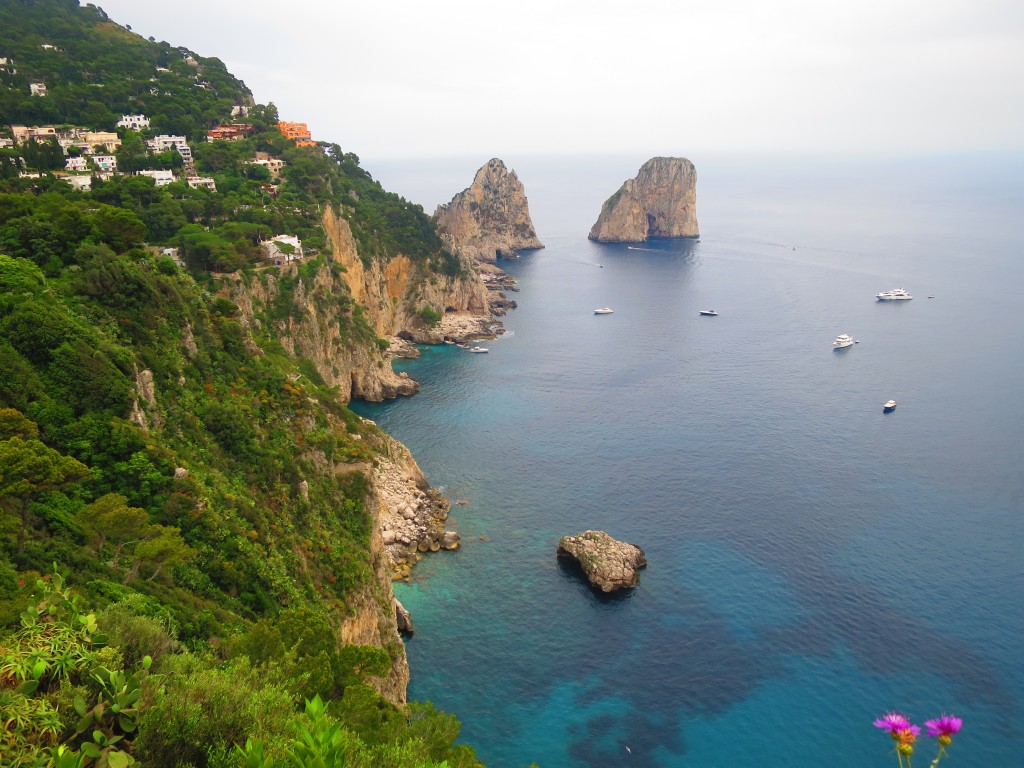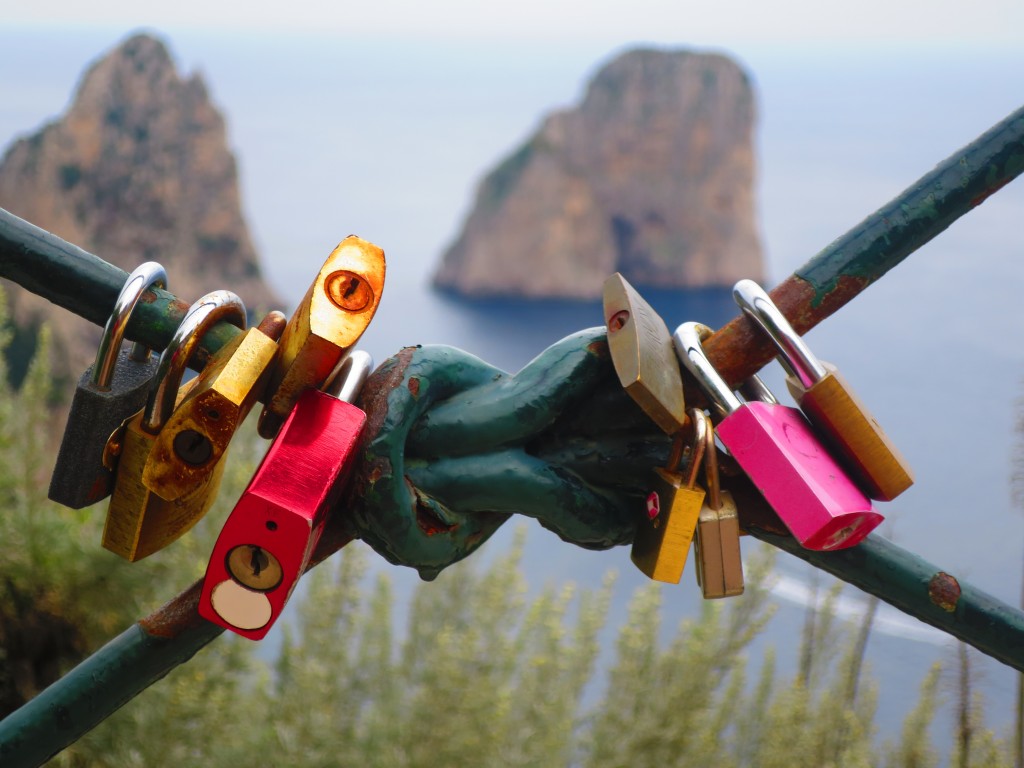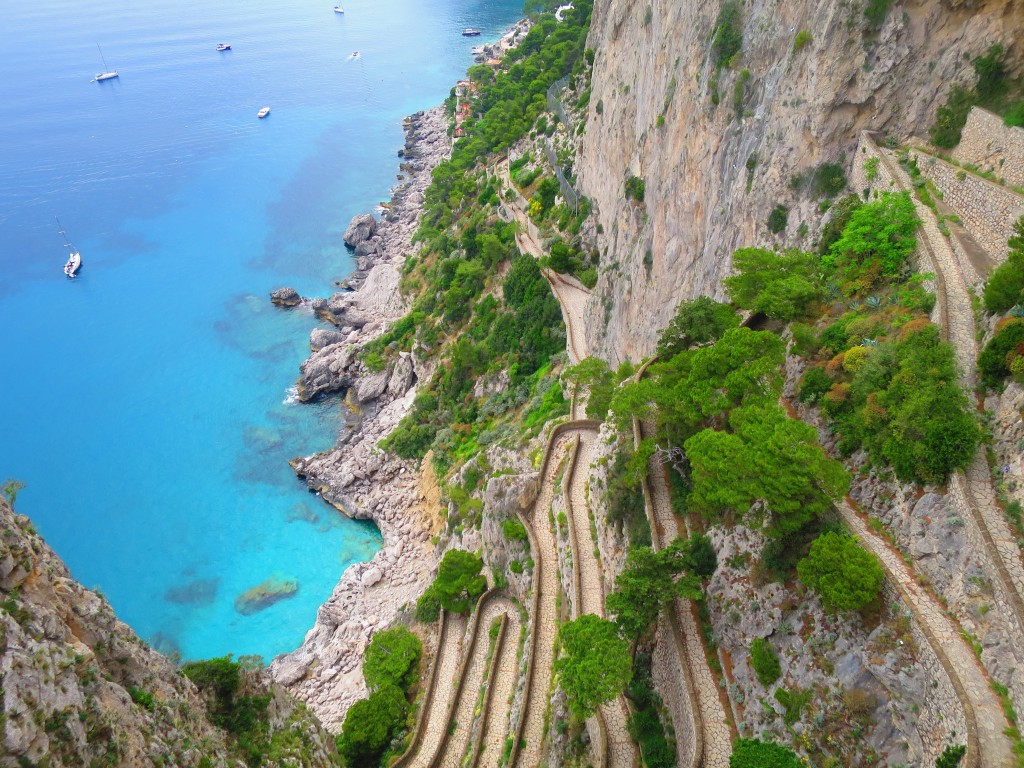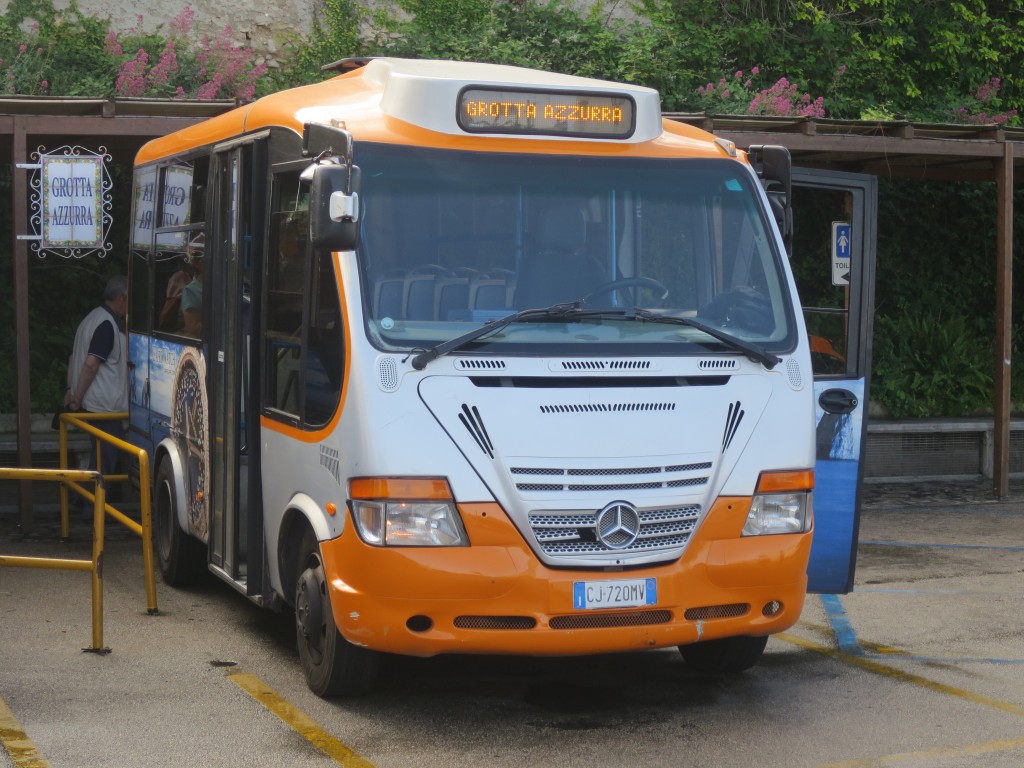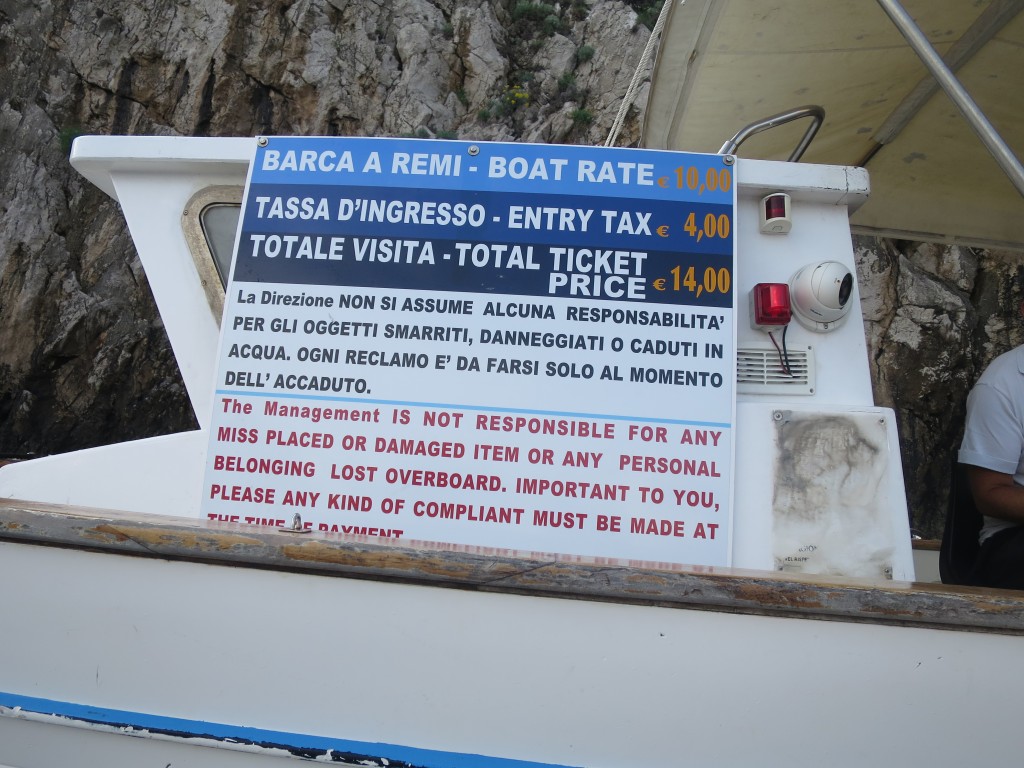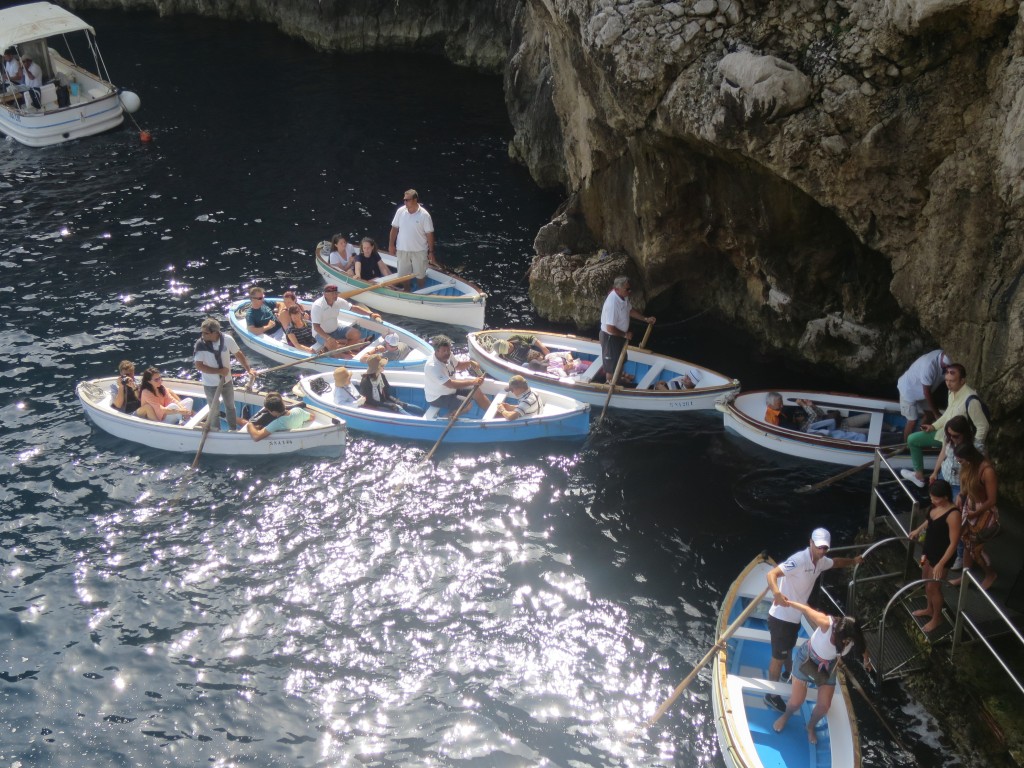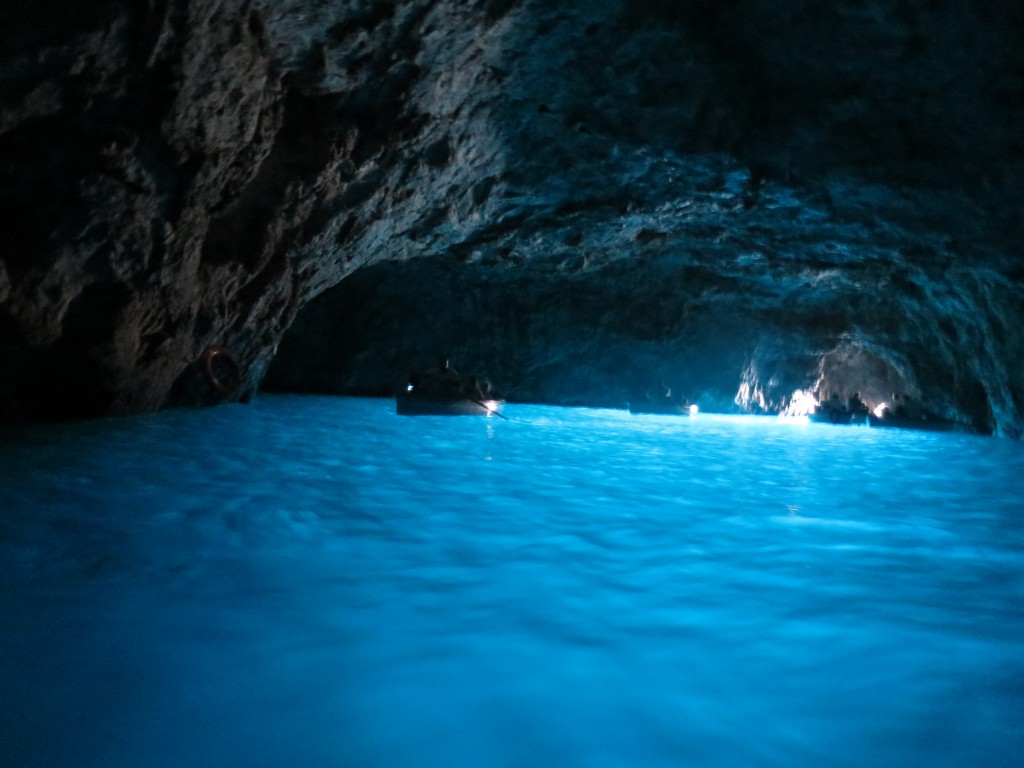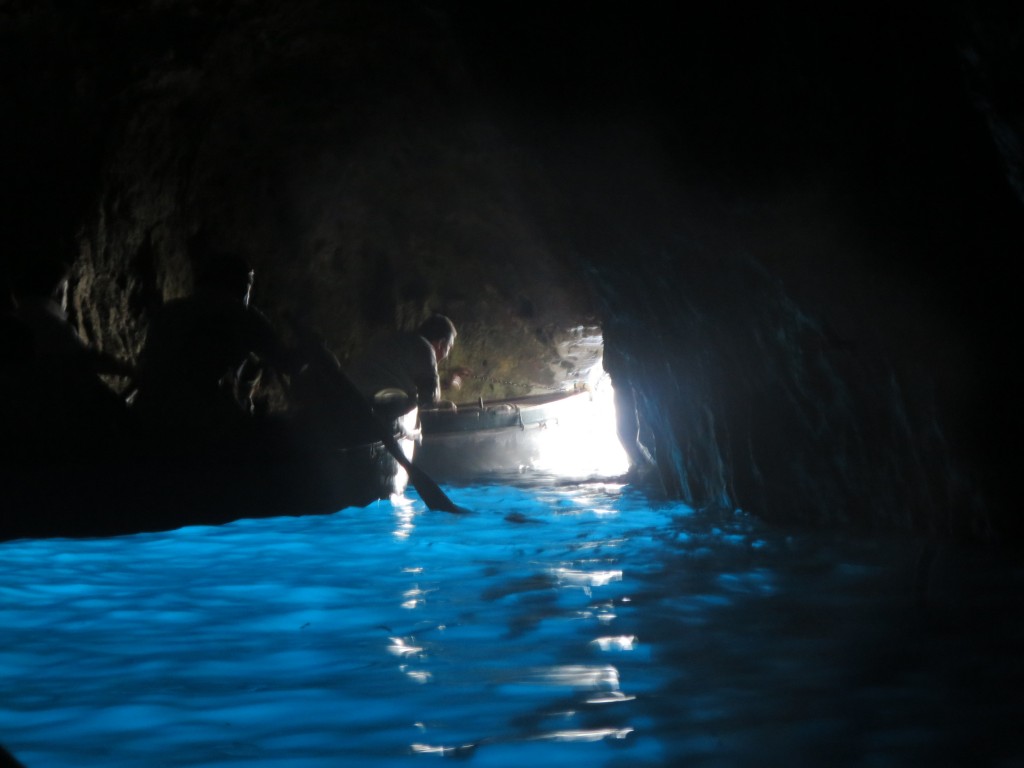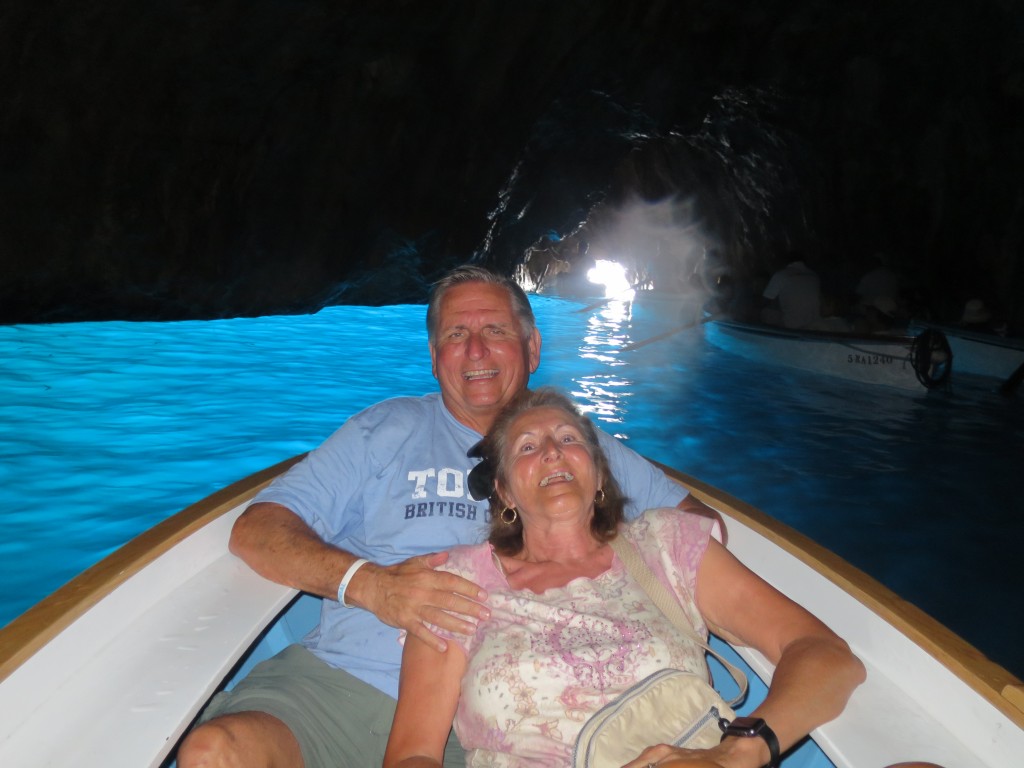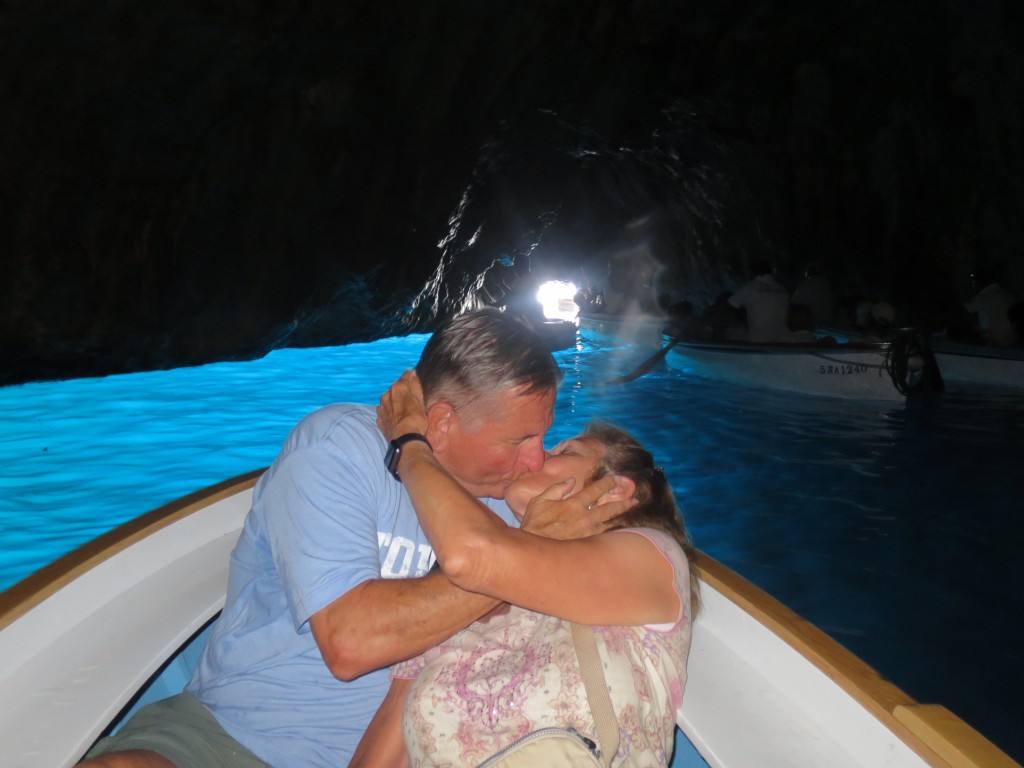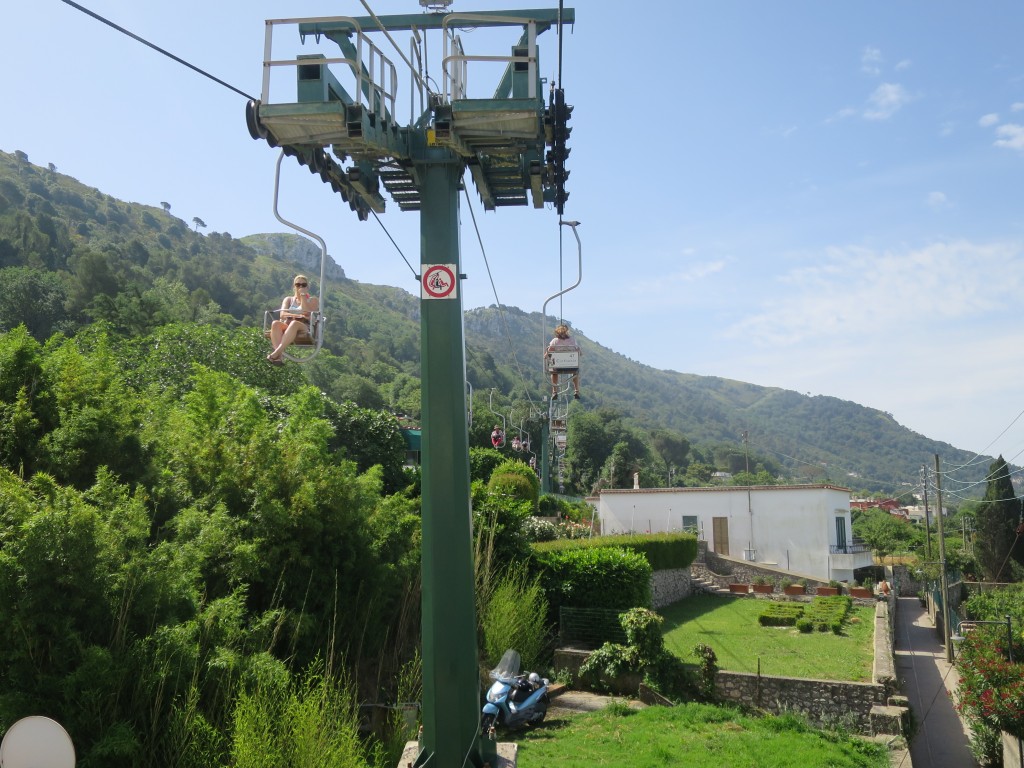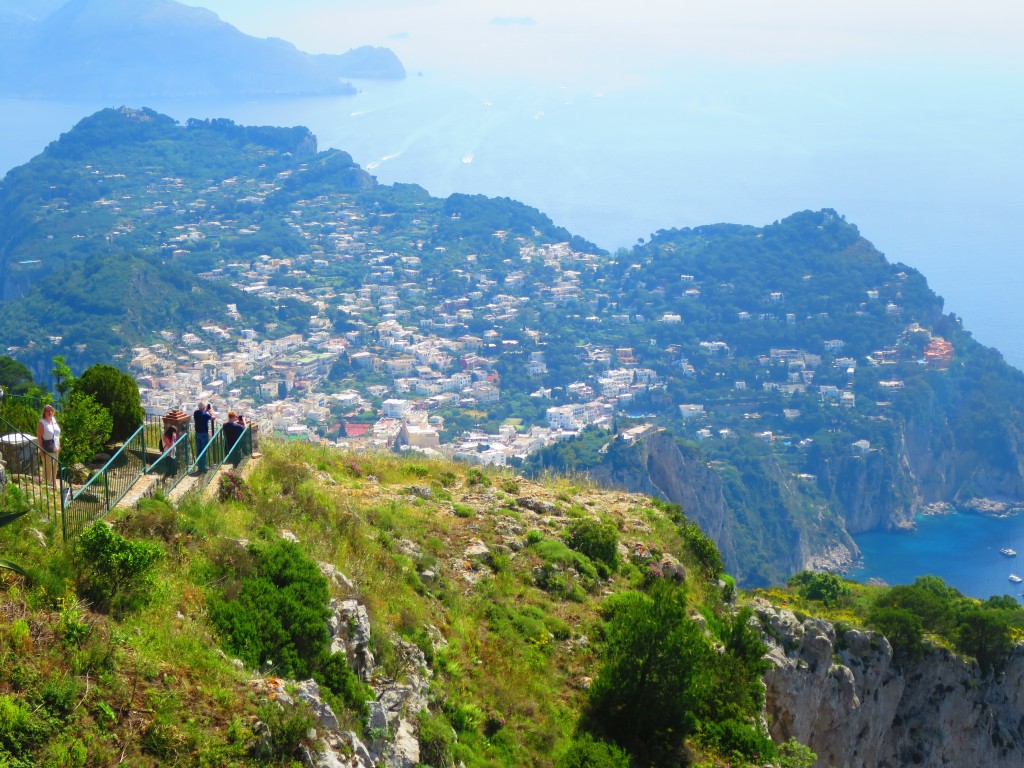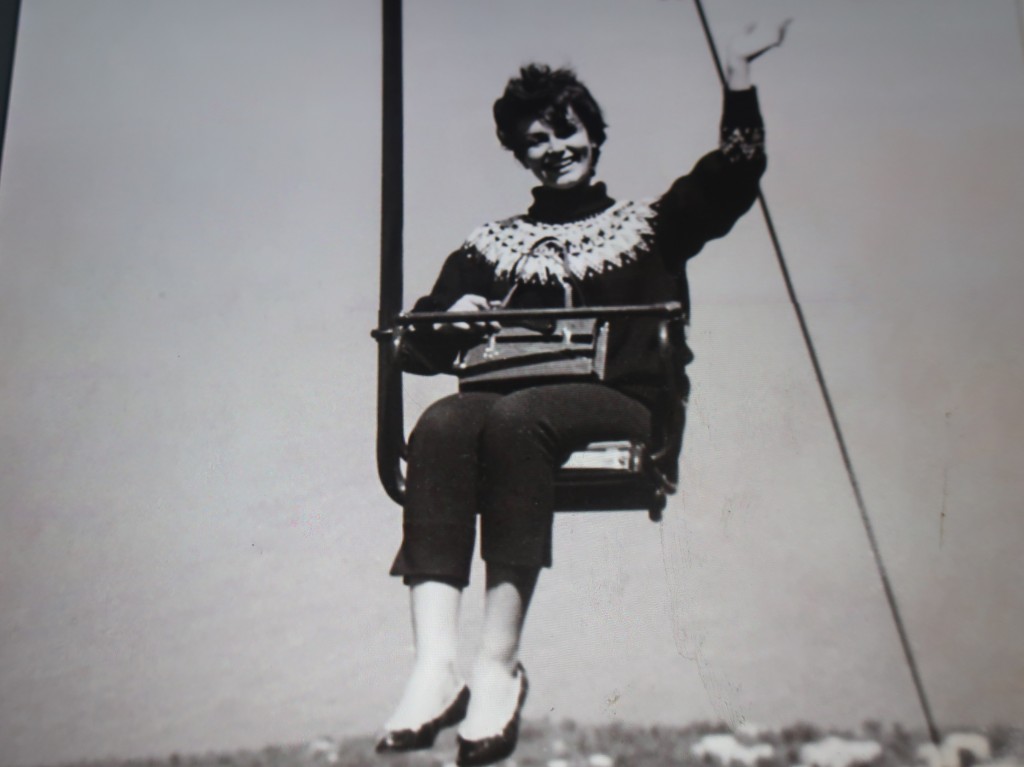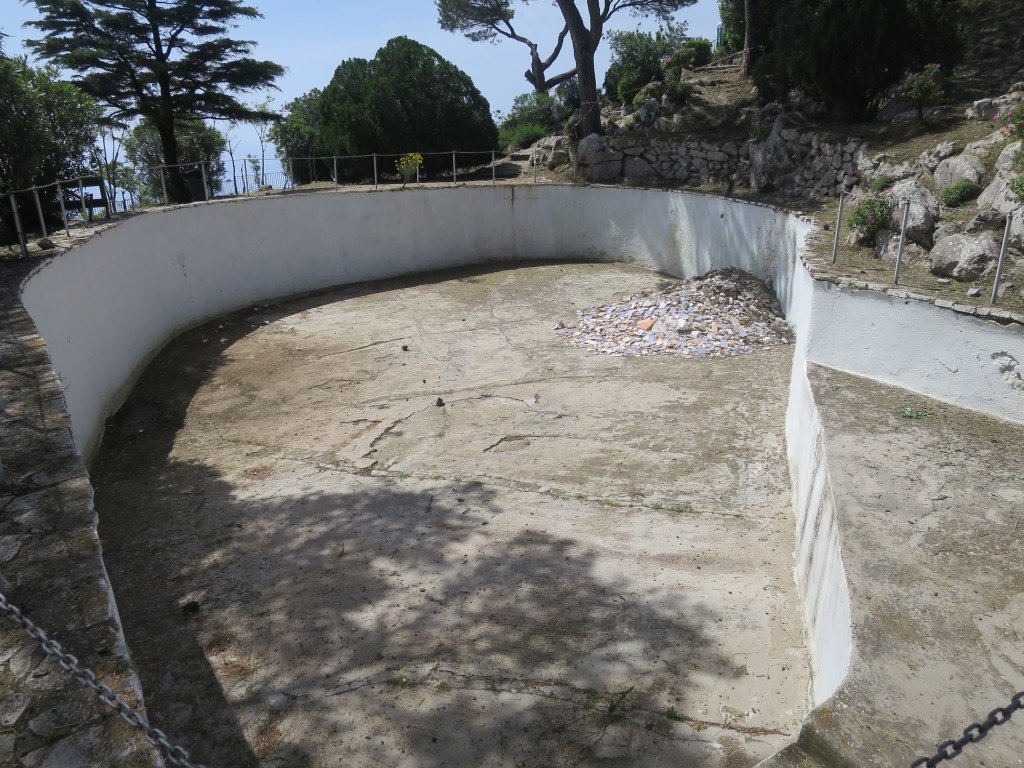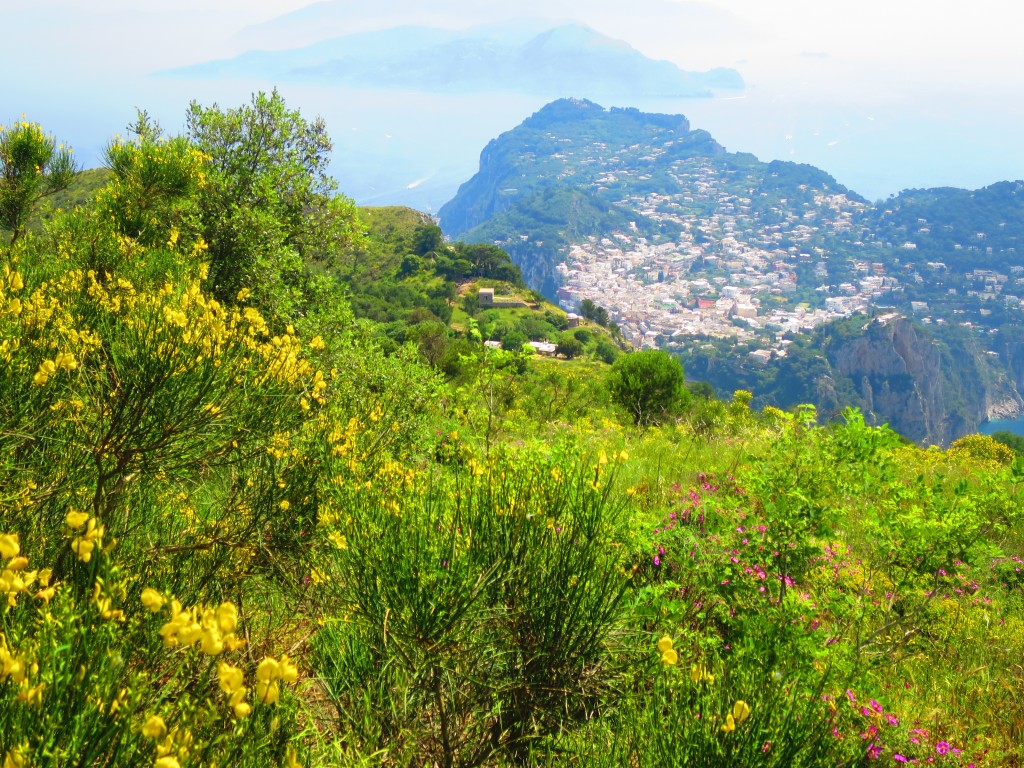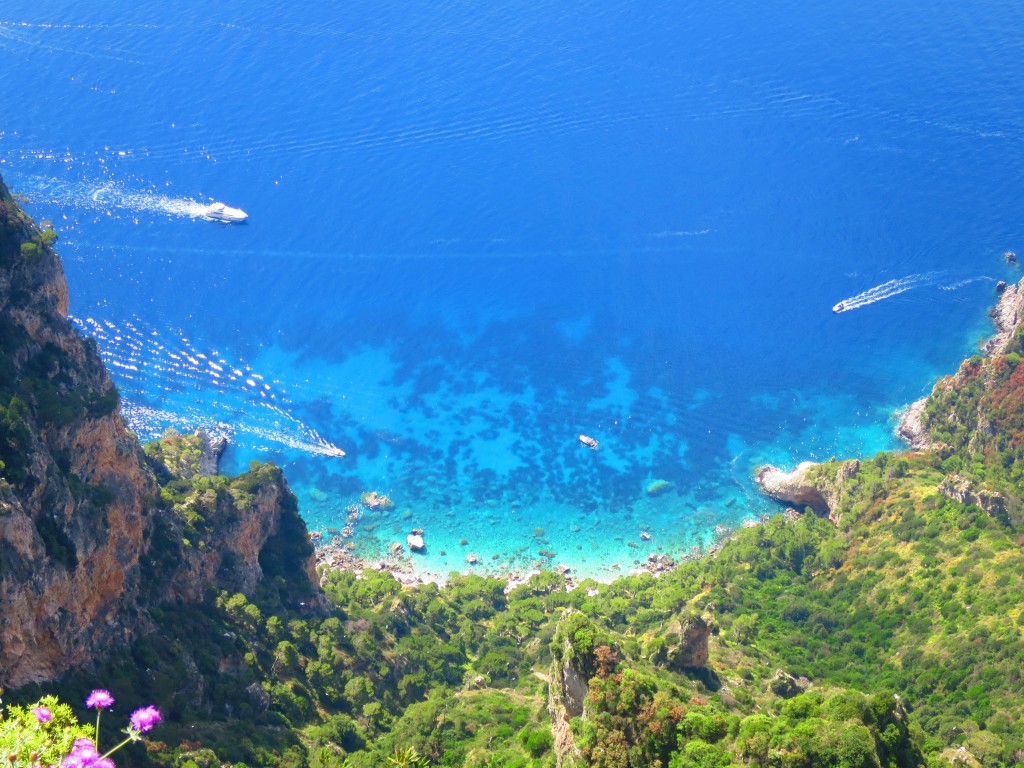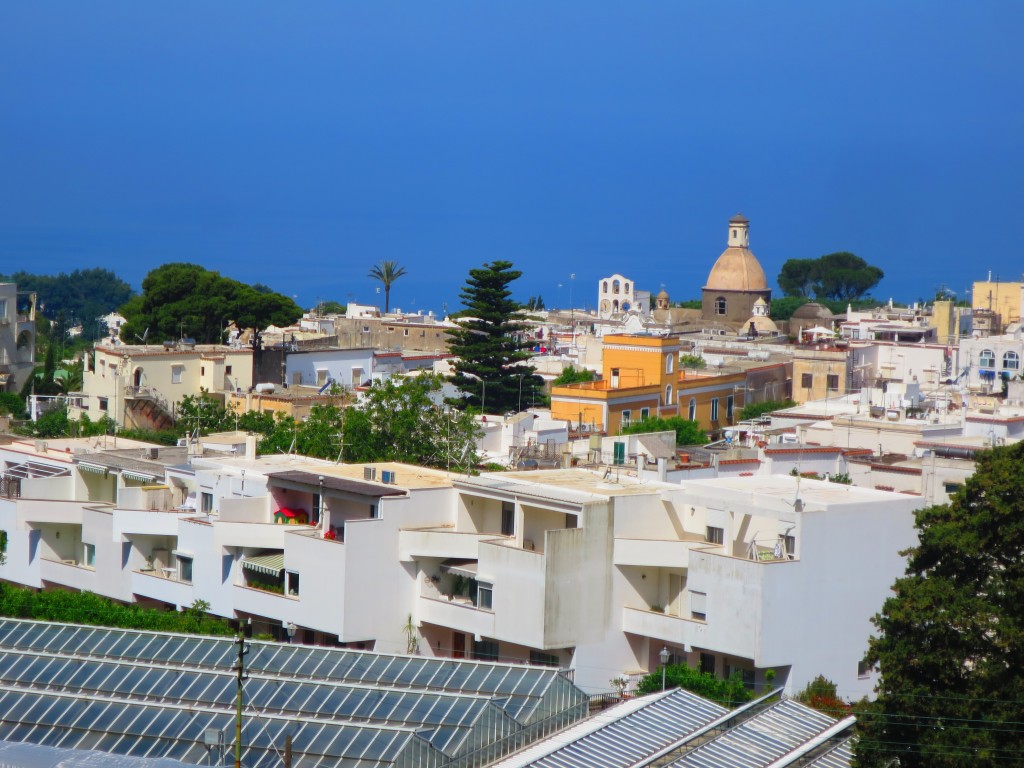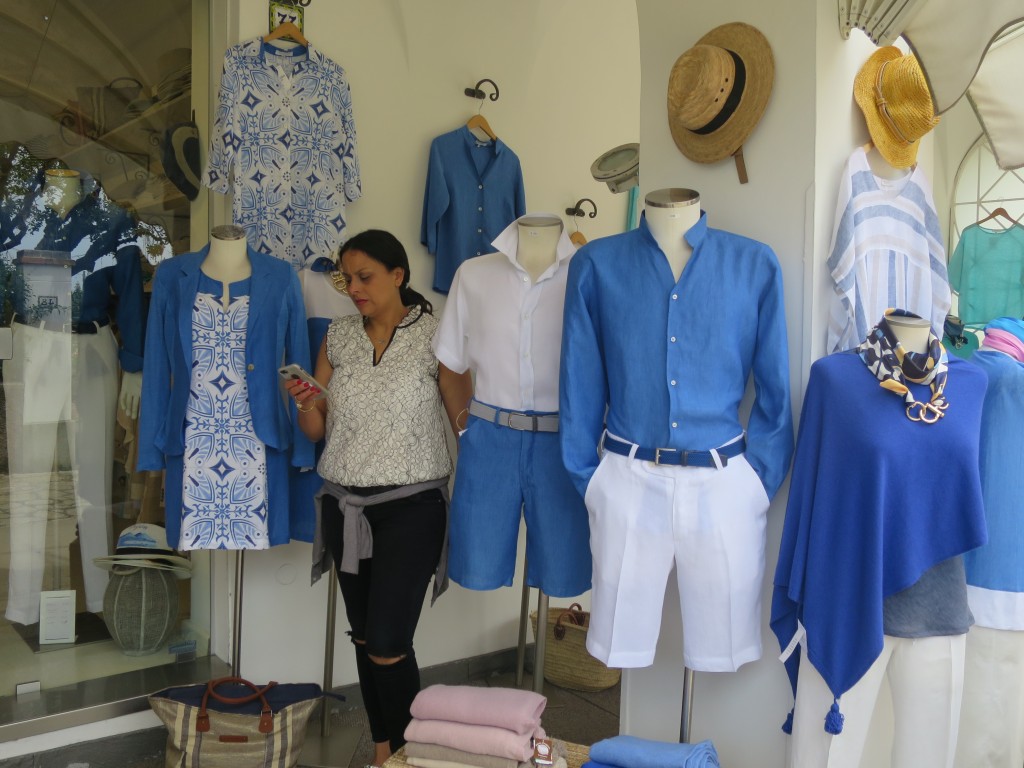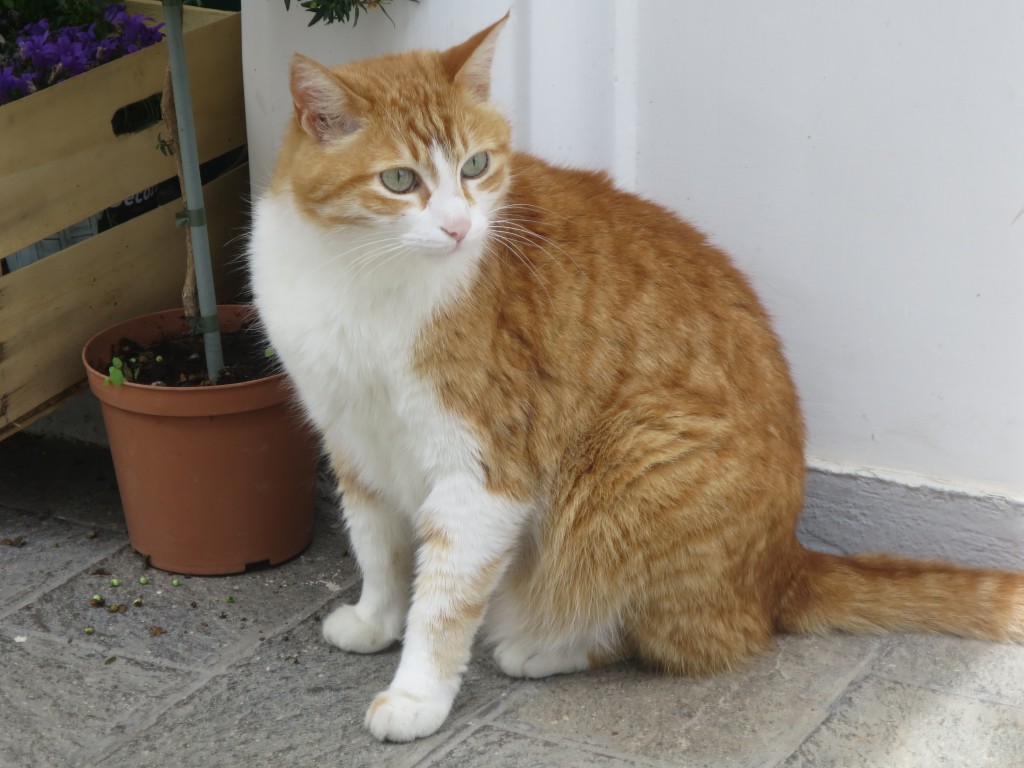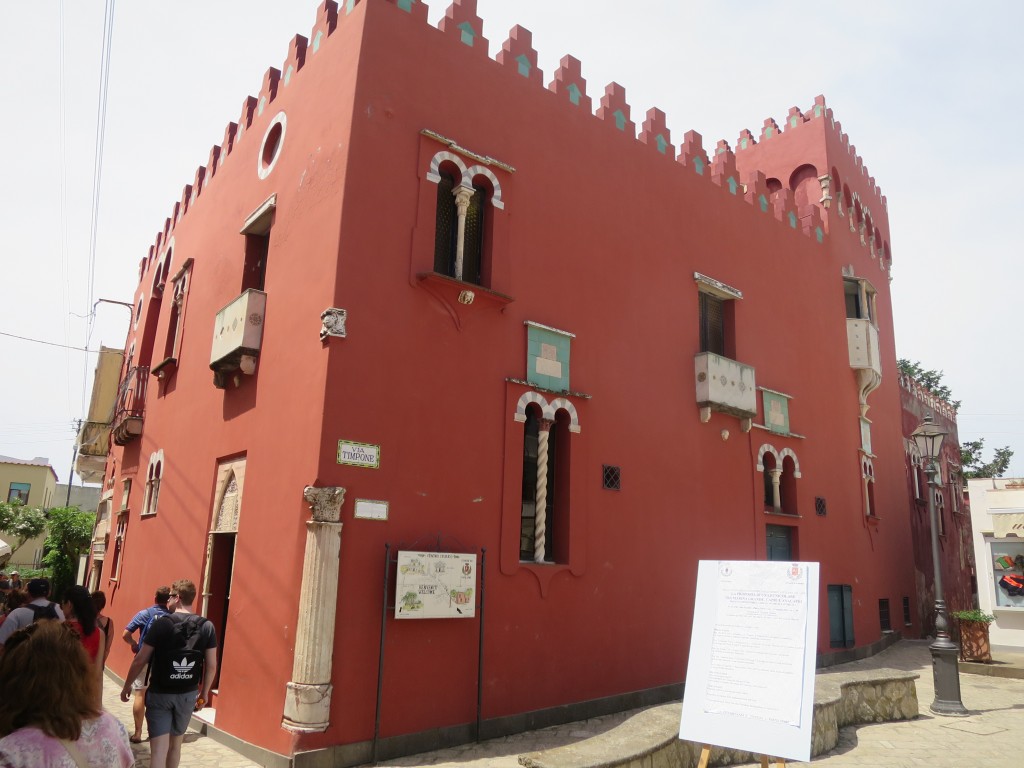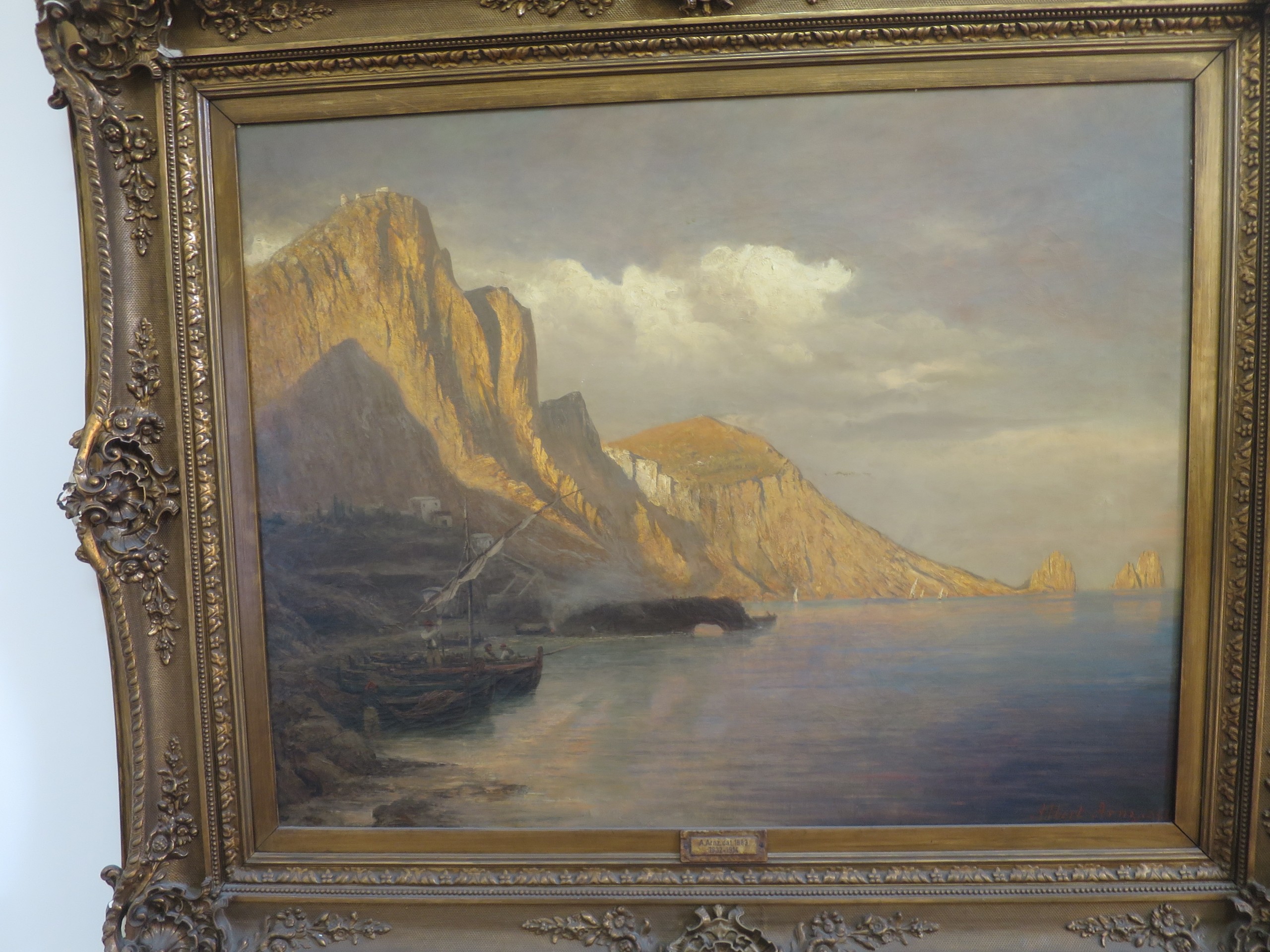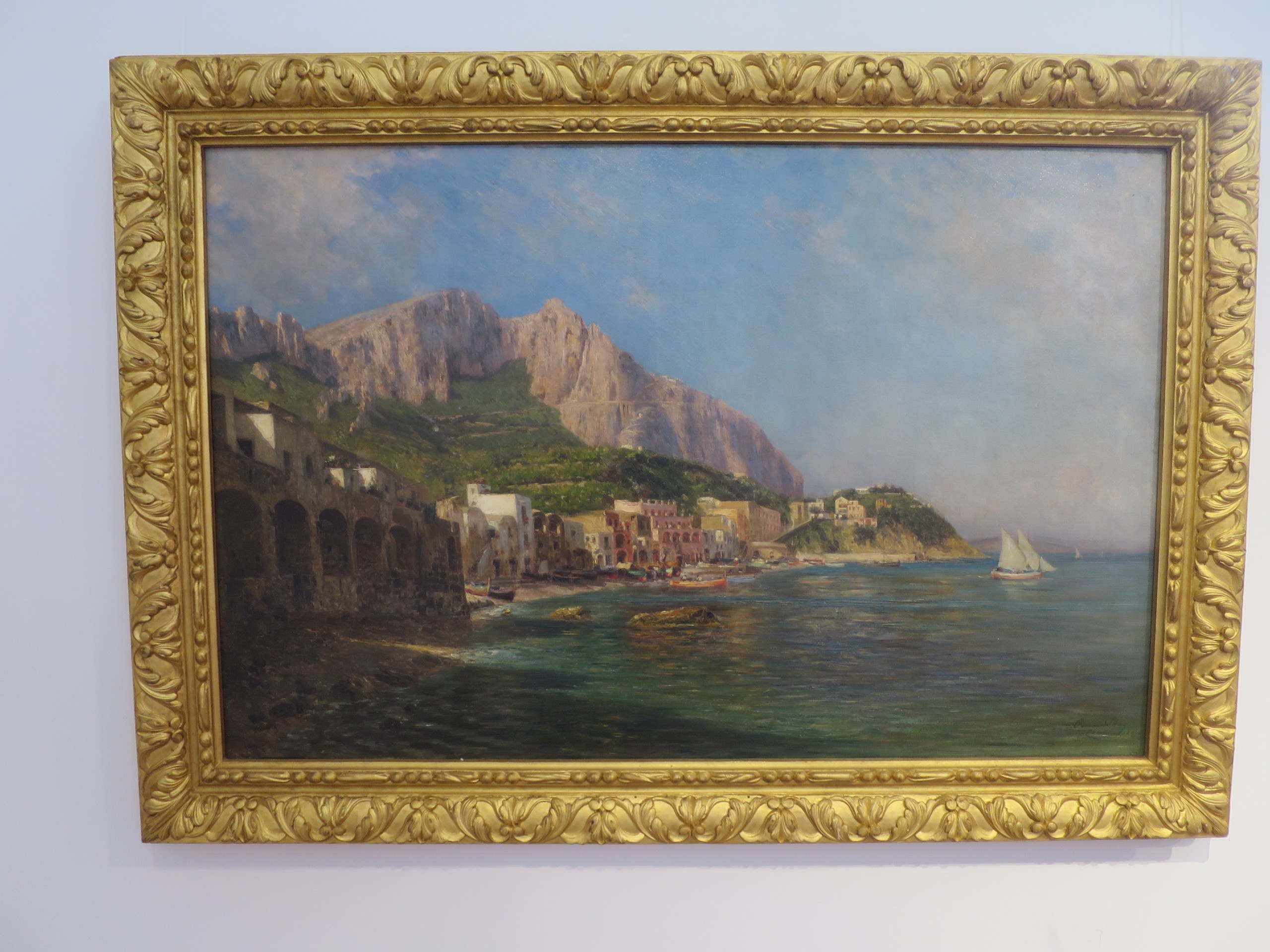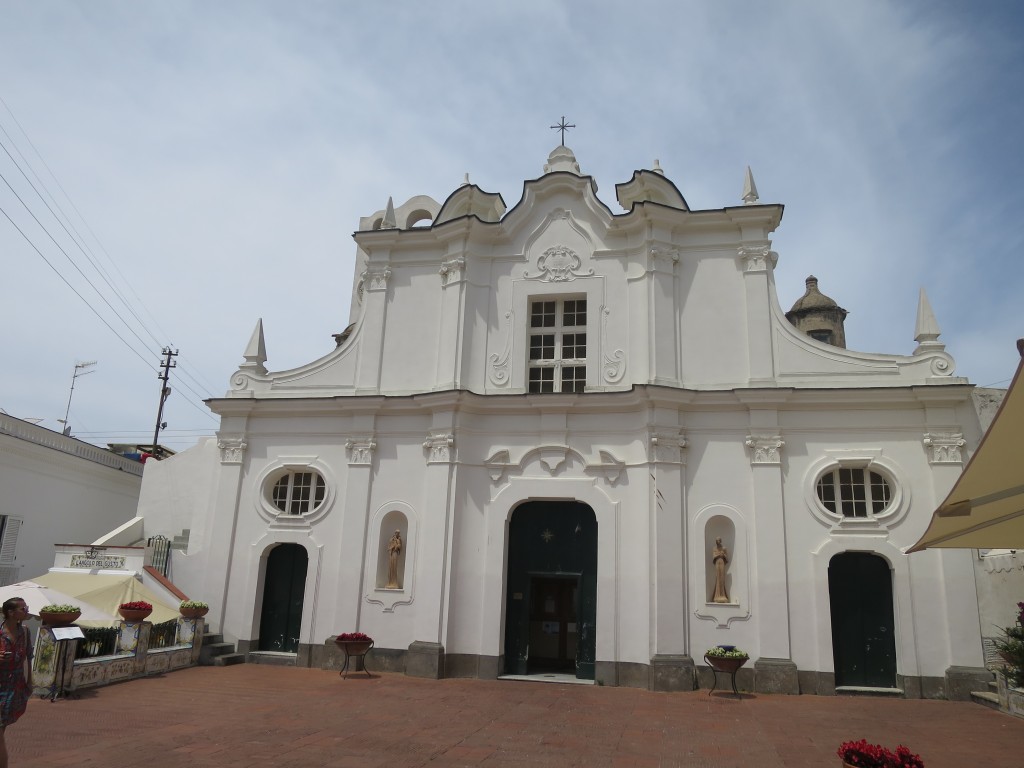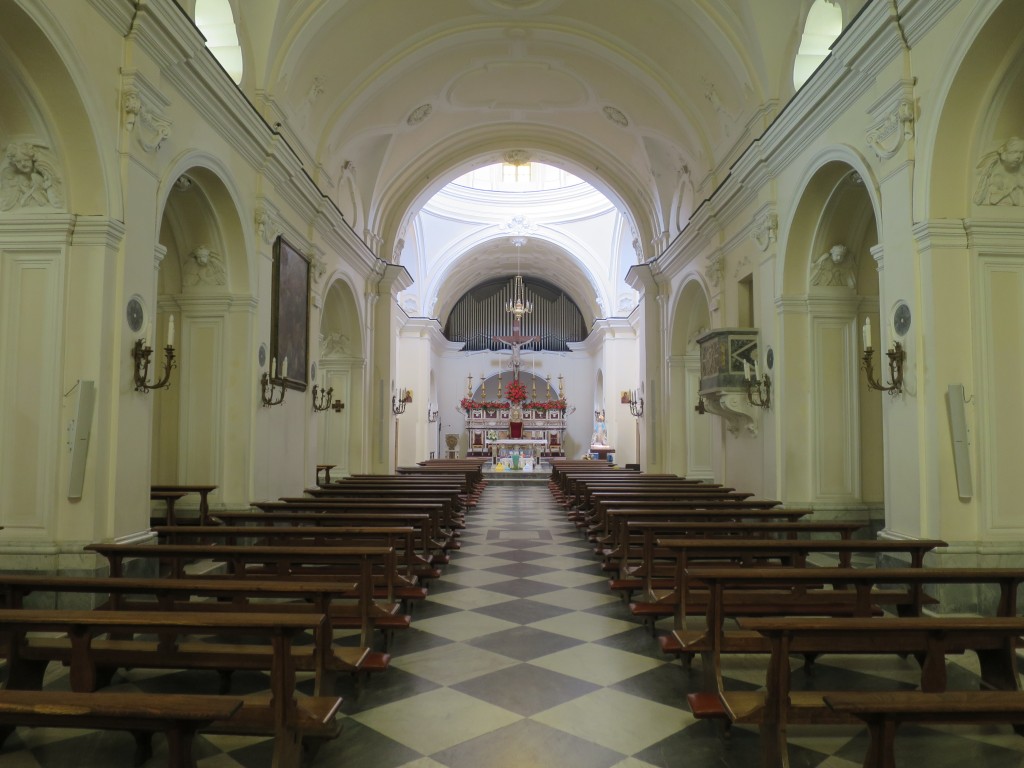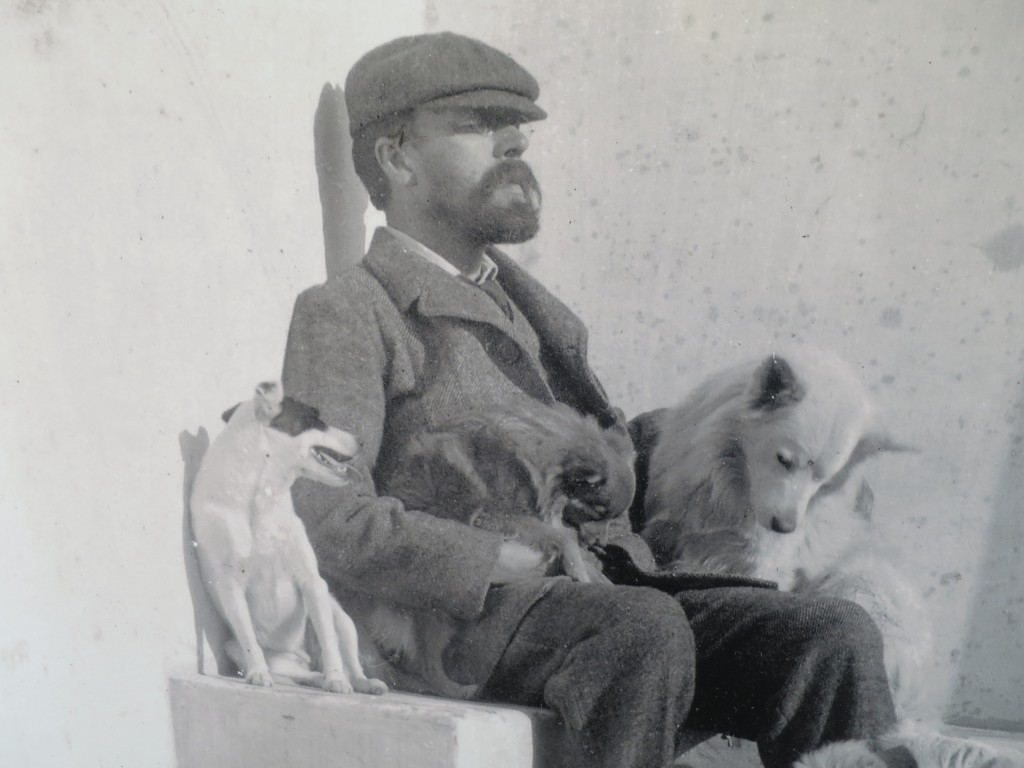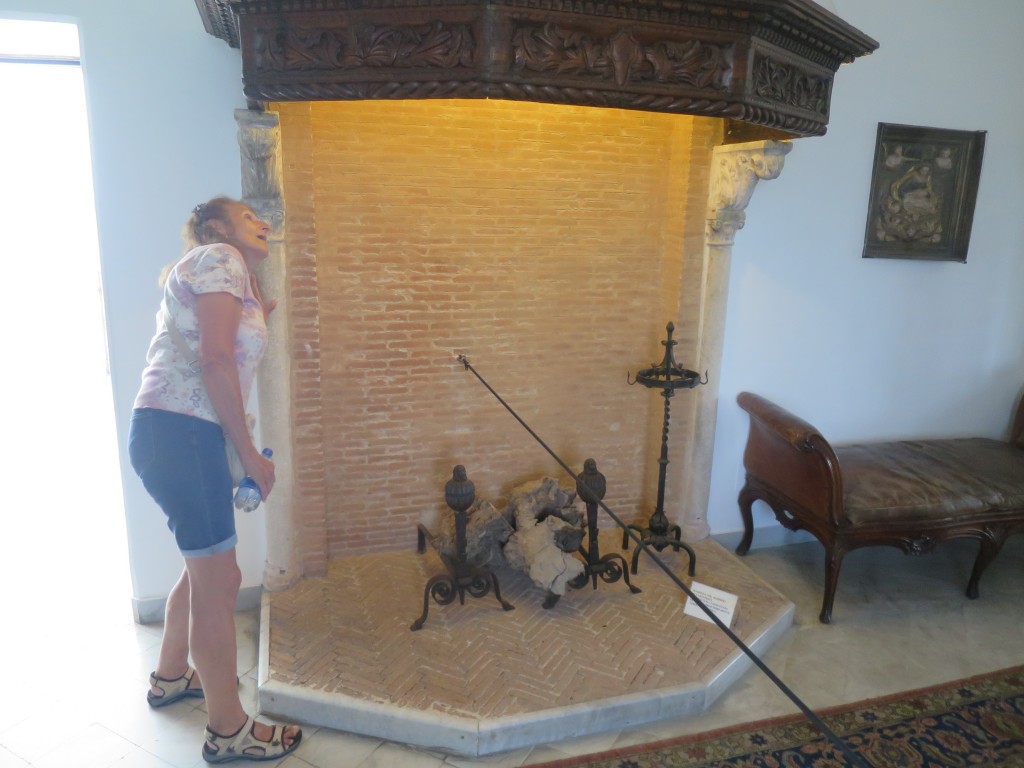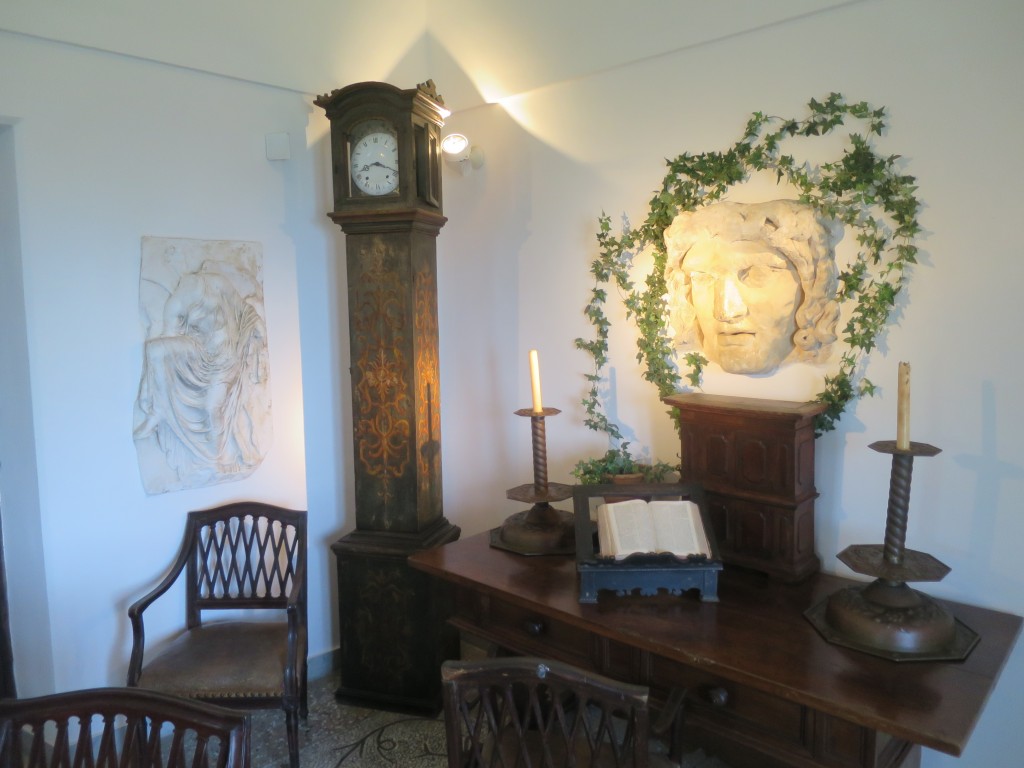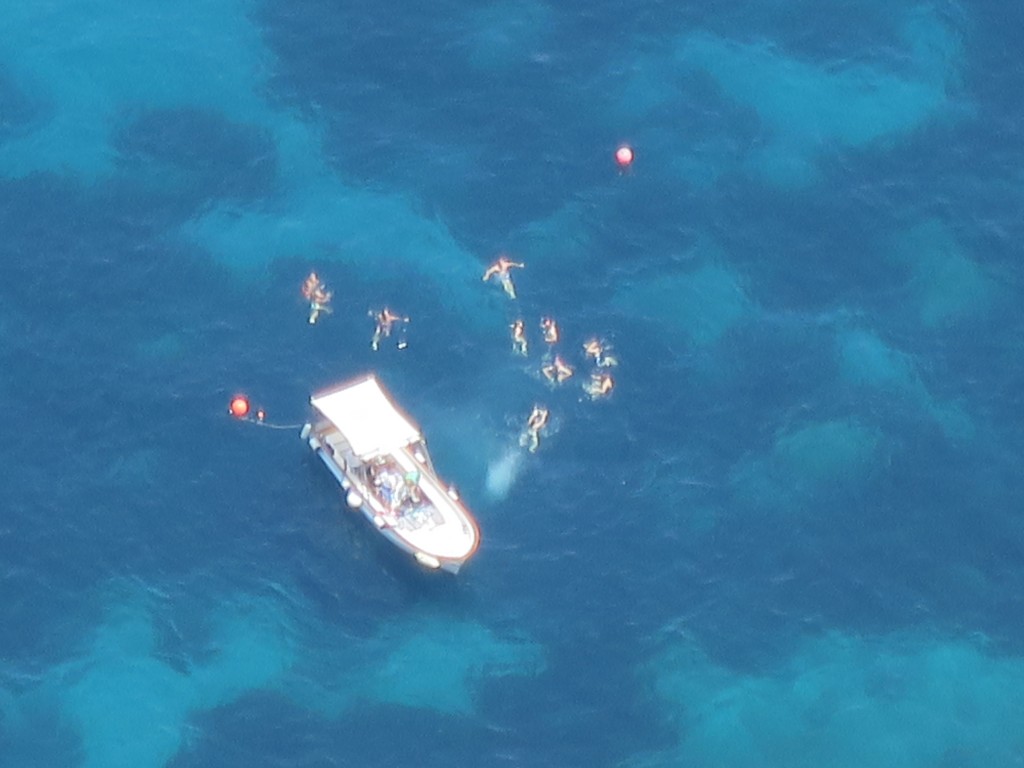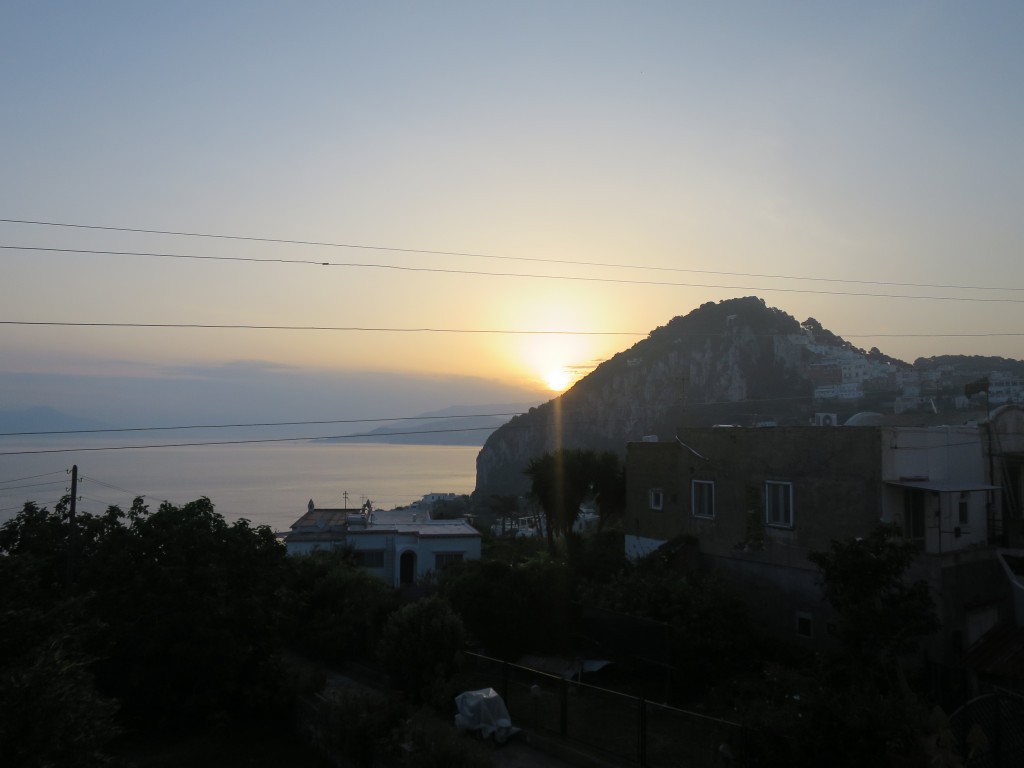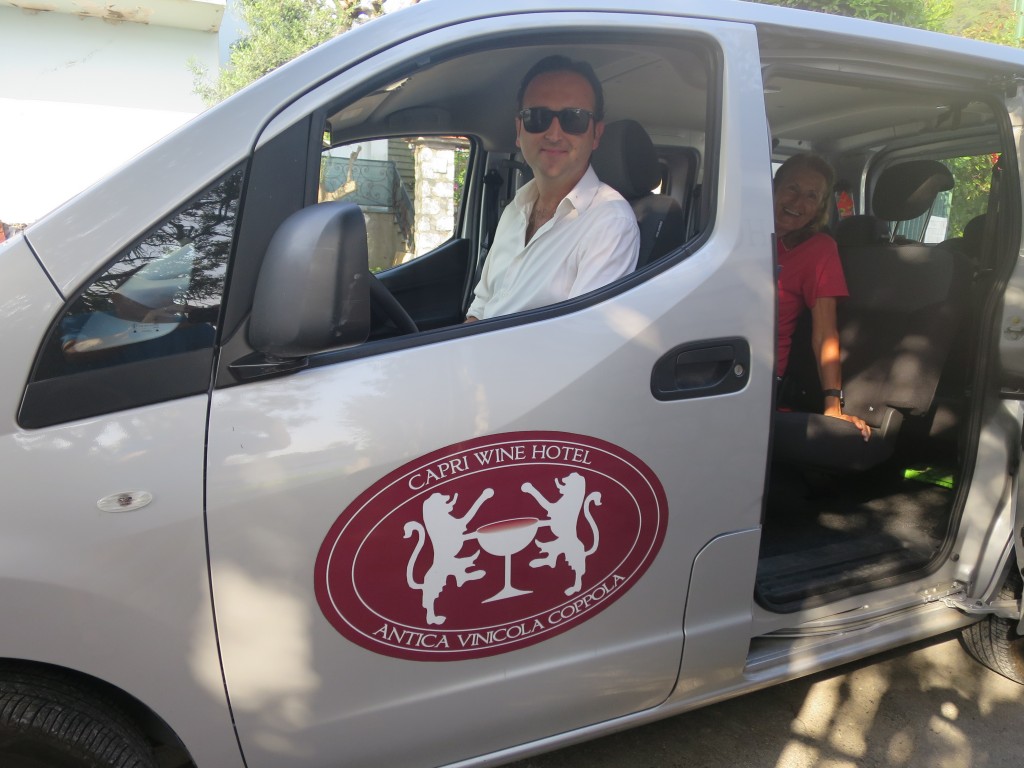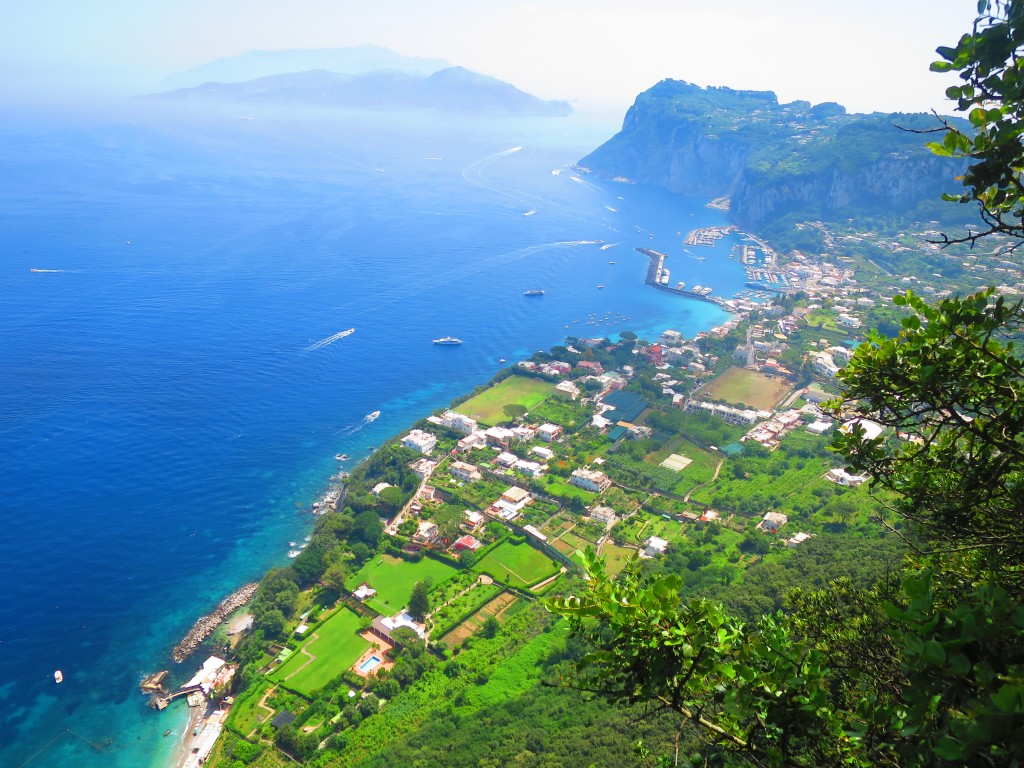 We had just spent five days in early June of 2018 visiting Sorrento, Pompeii, Paestum and Positano. We would end our Italian journey on the beautiful Isle of Capri for four nights.
We had just spent five days in early June of 2018 visiting Sorrento, Pompeii, Paestum and Positano. We would end our Italian journey on the beautiful Isle of Capri for four nights.
Most people who come to Capri are day trippers from either Sorrento or Naples. The island is regarded as a place for its jet-set-style and as a “luxurious island” getaway. We wanted to experience the ambiance of this famous island, and not pay the top price.
We took a 15-minute hydrofoil from Sorrento to the main port called “Marina Grande.”
There are three ways to get up the small mountain to Capri town. You can walk, which is not a good idea. Take one of Capri’s famous–but expensive– taxis.
Most people pay two dollars and go up the ten-minute funicular. There is a service that will deliver you bags for about ten dollars.
We had arranged a stay at an Italian family villa, now a 12 room Inn, known as “The Capri Wine Hotel.” Through email, we arranged to be picked-up by the port. Raffaele, the owner of the Inn, was waiting for us.
From the instance we met Raffaele we knew this was going to be a memorable experience. The hotel is a generational ownership passed down from father to son. The entire family made our stay special.
We soon met friendly, Elena, wife of Raffaele. She gave us all the key areas of what we needed to see on the Isle of Capri.
We felt like The Capri Wine Hotel was like home. Indeed there is a wine celler.
Our room was extremely pleasant with a balcony overlooking the Gulf of Naples.
We had a TV that received the BBC. Most importantly, we had a small refrigerator.
The bathroom is modern.
For the next four mornings, we looked towards the Capri Wine Hotel breakfasts. My spicy omelets were cooked to perfection.
The chef was “Sura,” from Sri Lanka. Sura always had a smile and worked at the hotel for four years. Sura was so friendly and accommodating.
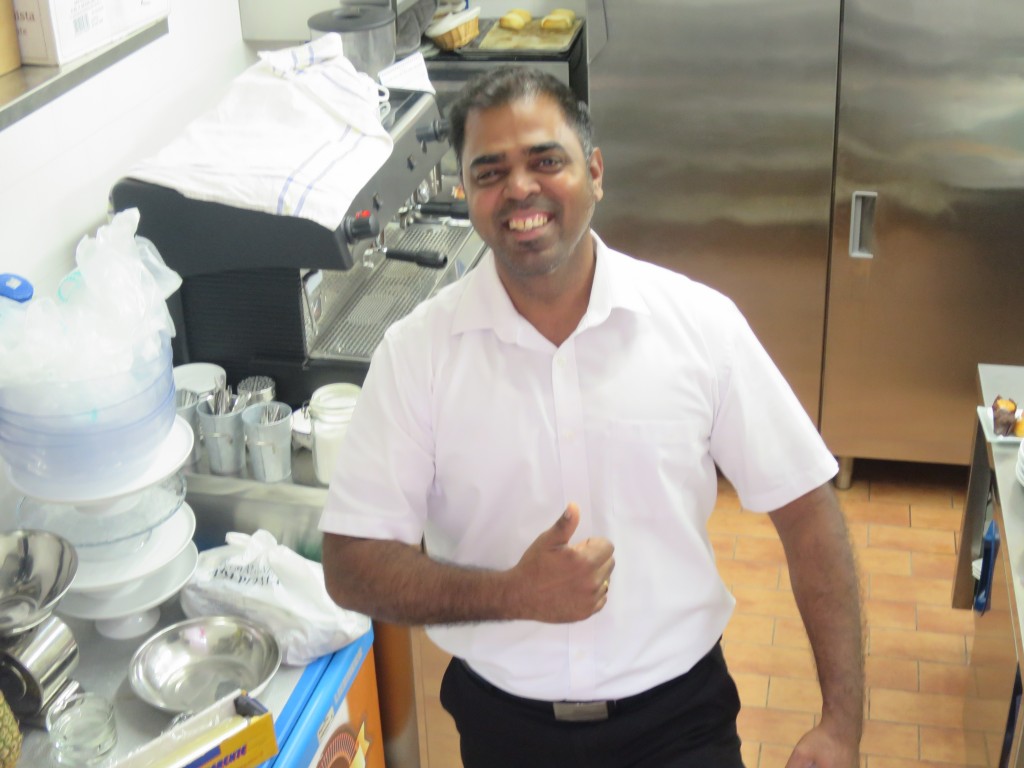 Kathie loved Sura’s poached eggs. He actually cooked the eggs in a plastic bag. The eggs were perfect.
Kathie loved Sura’s poached eggs. He actually cooked the eggs in a plastic bag. The eggs were perfect.
Our table overlooked the Gulf of Naples. We had great weather and a zephyr to cool us down.
The garden would be a perfect place for a pool I thought to myself. But, then, the price of this hotel would dramatically go up in price. Forget about the pool.
On the first day, we took a 20-minute walk into Capri town. We quickly found out that “Piazza Umberto” was the center of town. It was where all the action took place. We did one day sit down at one of the cafes and enjoyed the ambiance of Capri.
It was a no brainer to order a genuine “Caprese” salad appetizer.
The table next to us order a genuine Italian Bruschetta.
A few days later, we came upon a large celebration by the church in the main square.
We witness the gathering of a wedding party. It was easy to tell who the partners were.
For many years, Capri has been famous for its liberal nature towards gays. There have been quite a few famous writers, artists and singers who have stayed on this small island—four square miles. We loved the openness, beauty and freedom of Capri.
We would soon take our walk to the famous Natural Arch.
We walked down the 300 steps along the coastal trail, the Pizzolungo trail.
From this trail, you could see the famous Villa Malaparte. It is perched high above the sea and built in 1937. It was once the home Curzio Malaparte—poet and journalist. The villa is designed as “modern Italian architecture.” Unfortunately, the villa is closed to the public.
The pleasant walk provided us time to unwind and enjoy the moments.
Further down on the trail are breathtaking views of the side of the famous rock stacks of “Faraglioni.” The following day we would be taking a boat trip through its famous archway.
In the morning we had our superb breakfast by Sura. We would walk up to Capri Town and then walk uphill about a mile and a half to “Villa Jovis.”
Along the path, we came across a dog who was quite inquisitive.
Then, too, there was the friendly Caprian.
There are a number of beautiful home along the way.
This ancient Roman villa was built in 27AD by emperor Tiberius. He actually lived in Villa Jovis for ten years. One of the main reasons was to escape Rome and the idea of being assassinated was always on his mind.
The villa is quite extensive with eight different levels. The place is perched over a thousand-foot Monte Tiberio over the northeast part of the island. There are commanding views.
Paint can still be seen along the pool area of the 1.7 acre complex.
At one of the highest areas of Villa Jovis (meaning Jupiter), there was built in 1979 a large Madonna statue. It was here where we met two lively Italians who told us of another exceptional island on the other side of Naples, Ischia.
In the early afternoon, we went down to the main port to take a boat cruise around the island. We took a larger boat, but the smaller boats looked fun.
As we were waiting to board, we met an extremely friendly couple from Delhi, India: Pinky and Rocky Khanna. We found out that they resisted an arranged marriage, and married each other breaking traditional norms. One could easily tell they love each other very much.
The rock formations along the coast are spectacular.
The most famous rock formation is known as “Faraglioni.”
There is an arch in one of the pillars that a good size boat could go through.
At some of the stops, it was way too crowded—for the boats.
We rounded the Punta Carena Lighthouse that opens up into the Tyrrhenian Sea which invariably becomes the Mediterranean Sea.
On the north-side of Capri is the famous “Blue Grotto,” also named in Italian as “Grotta Azzurra.” Our boat stopped to let passengers off if they wanted to “boat-in” the grotto. We found out it was going to be a three hour wait. We decided to do the grotto the following day.
That night, we enjoyed going to a local restaurant known as “Verginiello Ristorante” which opened in 1961. There are a few tables along the cliff’s edge, but you had to reserve these tables weeks before hand.
Spaghetti vongole and mussels were on my diet.
Kathie loved the vegetable bean soup. It was extremely delicious and one we will never forget.
After dinner, we walked to find “Giardini Augusto.” Along the way we found the famous Hotel Luna.
This is where Tom Cruise once stayed. We walked right-in and demanded our key—not. We were surprised how open this hotel is. The old key system is still the same.
Giardini Augusto is a botanical garden made by a German industrialist Friedrick Alfred Krupp.
The Krupp’s made a fortune making arms for war. For a while, it was known as “Krupp Gardens,” until Germany lost WWI.
A 180-degree panoramic view can be had of the southside of the island.
There are steps that go down to the sea and a village below. It is believed Friedrick had a number of liaisons with boys and men in a grotto below. His homosexual activities may have led to his death by suicide in 1902. The steps were open when we visited, but we did not go down as it was getting late.
The following morning, we decided to go to the Blue Grotto by taxi. Fortunately, Raffaele explained a far cheaper way—by local bus. We walked into Capri town to take a bus to a village known as Anacapri. We would take a dedicated bus to “Grotta Azzurra.”
We arrived there by 9:00AM. The crowds had not arrived as yet. The picture below is after we toured the cave.
After a few steps and getting into a small boat which takes you to a larger boat “to pay.” We did not think the amount too excessive.
Our small boat carried five people which included the oarsman.
The Blue Grotto receives its name from the sunlight which illuminates the cavern. The cave is over 150 feet deep and about 40 feet wide. The depth of the water is almost 500 feet down.
It was known in ancient times as Emperor Tiberius swam here in 27 AD. Today, it is illegal to swim in the cave.
Through a very small hole—Kathie had to lay on top of me—we went into this rather large cavern. With other small boats, the oarsmen takes you around. Like Venice, the oarsmen do a bit of singing and even takes your picture. The memorable experience lasts for about ten minutes. We thought it is one of those “must-do” activities.
As you are about to be taken to the ledge where you entered, the oarsmen will ask you for a tip. Rick Steves said a dollar would be enough. This oarsman was not going to take a dollar. I gave him five dollars and he was happy. These oarsmen are unemployed for about three months during the winter. You can’t purchase a beer at EPCOT for five dollars. This experience is worth much more than $5 dollars.
As the morning was still young, we took a bus to Anacapri and explored that village. Our first stop was to take the chair lift up Monte Solaro.
Monte Solaro is nearly 2,000 feet high. It is the largest mountain on the island. It was once a fort during the Napolenonic times as it does overlook the Tyrrhenian sea and the gulf of Naples.
A single chair left will take 13 minutes to get to the top. You are no more than thirty feet above the ground. It is advertised that the famous USA actress Rita Hayworth even took the chair. I think they need to get somebody more modern to advertise Monte Solaro.
There is a large statue of Emperor Augustus, who was the first emperor to visit Capri.
Today, there is a café to sit for some refreshments. This was once a popular resort. An abandoned pool can still be seen.
The views are majestic and that alone is well worth the trip.
There is an interesting promenade in Anacapri. Cafés and shops line the street.
Seeing a cat or even a dog is not unusual.

